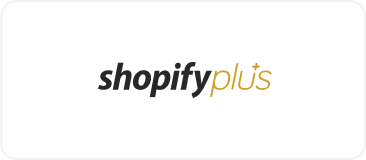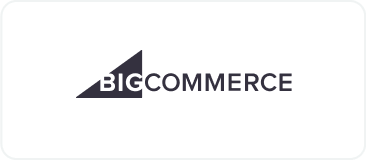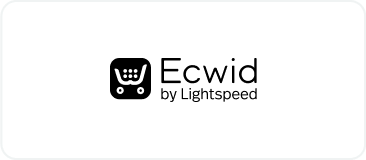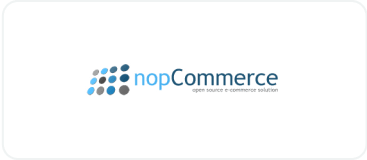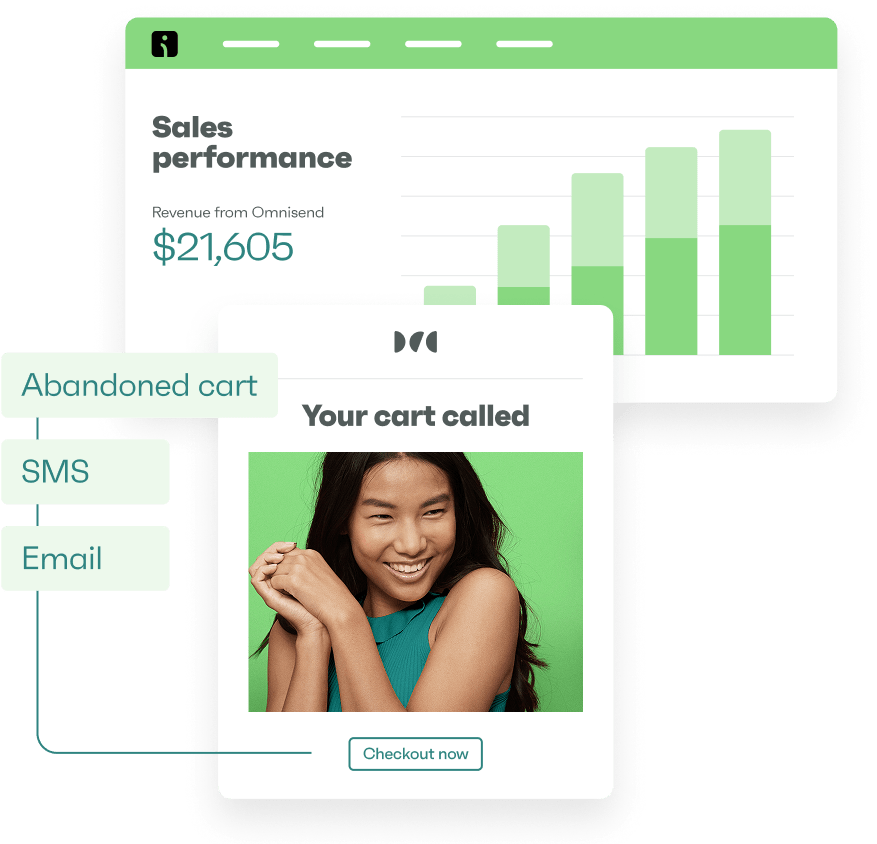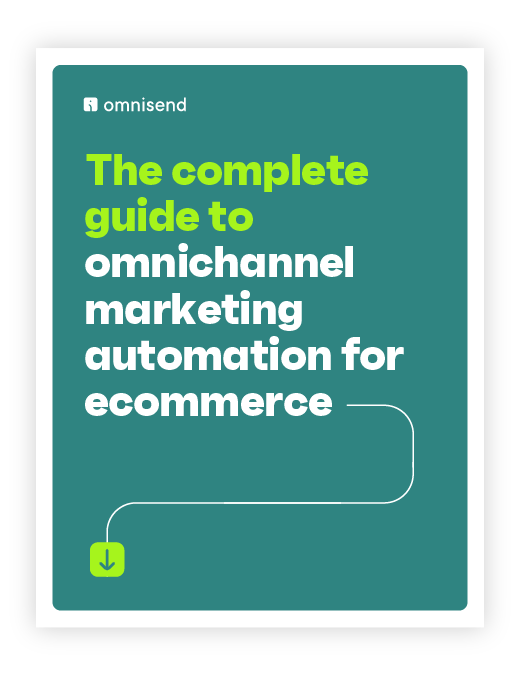
Drive sales on autopilot with ecommerce-focused features
See FeaturesYears of ecommerce have taught me that there’s no better way to nurture customers and increase sales than an email marketing campaign. Unlike social media algorithms or paid ads, email puts you in direct contact with people who asked to hear from you.
The difference between profit and spam comes down to strategy. Send the right message at the right moment, and subscribers buy. Blast everyone with everything, and they unsubscribe.
In this guide, I’ll walk you through different types of email marketing campaigns that convert. You’ll see real examples from welcome series to seasonal promotions, plus strategies for timing and personalization.
Quick sign up | No credit card required
What is an email marketing campaign?
An email marketing campaign is a series of emails sent to your subscribers. You might send one promotional email or multiple messages over weeks. Each campaign has a clear goal — driving sales, building relationships, or sharing information.
Some campaigns are one-time blasts, others have a schedule, and some are email automations sent in response to customer behavior and segment changes in your email marketing tool.
Email campaigns help you:
- Promote new products and generate sales
- Build lasting customer relationships
- Send targeted messages to the right people
- Track what works with opens, clicks, and conversions
- Automate follow-ups based on customer actions
Types of email marketing campaigns
Different campaign types serve various purposes in your email marketing campaign strategy. Some generate immediate sales while others build customer relationships.
I’ve found that a well-timed campaign makes the difference between ignored messages and instant sales. Choose the right type for each situation to maximize your results:
Promotional campaigns
Nothing moves inventory faster than a deadline and a discount code. Promotional emails announcing “48 hours only” or “subscribers save 30%” have contributed to some of my highest revenue spikes.
Time your promotions around significant shopping moments or new product drops. Exclusive access makes subscribers feel special, and this incentivizes purchases.
Post-purchase emails
Your customer just bought something, and they’re excited about it. Post-purchase emails see open rates above 60% because people track packages like hawks.
Go beyond boring confirmations by suggesting what works with their purchase. Someone who ordered a yoga mat probably needs a carrying strap or cleaning spray.
Cross-sell emails are among my top performers for 2025 — I use these to increase sales for high-profit items and customer lifetime value (CLV).
Re-engagement campaigns
Some subscribers go quiet — they stop opening, stop clicking, stop caring. Before deleting them forever, try one last “miss you” message with a tempting offer.
These quarterly cleanups do double duty by recovering lost customers and improving delivery. Email providers notice when you send to engaged lists.
Newsletter campaigns
Newsletters keep you connected between purchases without pushing sales every time. Instead, you can include product tutorials, customer stories, or industry updates worth sharing.
Your best email marketing campaigns will respect what subscribers signed up for — monthly means monthly, not surprise weekly promotions. Consistent value will keep your subscribers opening your emails.
Seasonal campaigns
During peak shopping seasons, customers actively hunt for deals with clear expectations. Black Friday alone can generate three times your normal email revenue, making seasonal campaigns worth the extra effort.
Plan campaigns three months ahead to secure inventory before it sells out and refine your email templates before sending.
This video will help you create successful seasonal email campaigns:
Product recommendation emails
Your data knows what customers want before they do. Past purchases and browsing behavior reveal exactly which products to showcase next.
Personalized recommendations get 50% more clicks than generic bestseller lists. When you show the right product to the right person, selling becomes effortless.
Survey and feedback emails
Customer opinions matter more than assumptions about what they want. Three to five questions get more responses than lengthy forms.
Send surveys right after purchases while details stay fresh. Use feedback to improve products before problems become public complaints.
Back-in-stock and price drop alerts
Disappointment turns to delight when sold-out favorites return to inventory. Back-in-stock alerts achieved 59.19% open rates and 5.34% conversion rates in 2024.
Price alerts work similarly because customers pounce when prices drop. Both campaign types run automatically once you set them up.
Best email marketing campaign examples
Check out these best email marketing campaigns to inspire your own:
1. Gussi
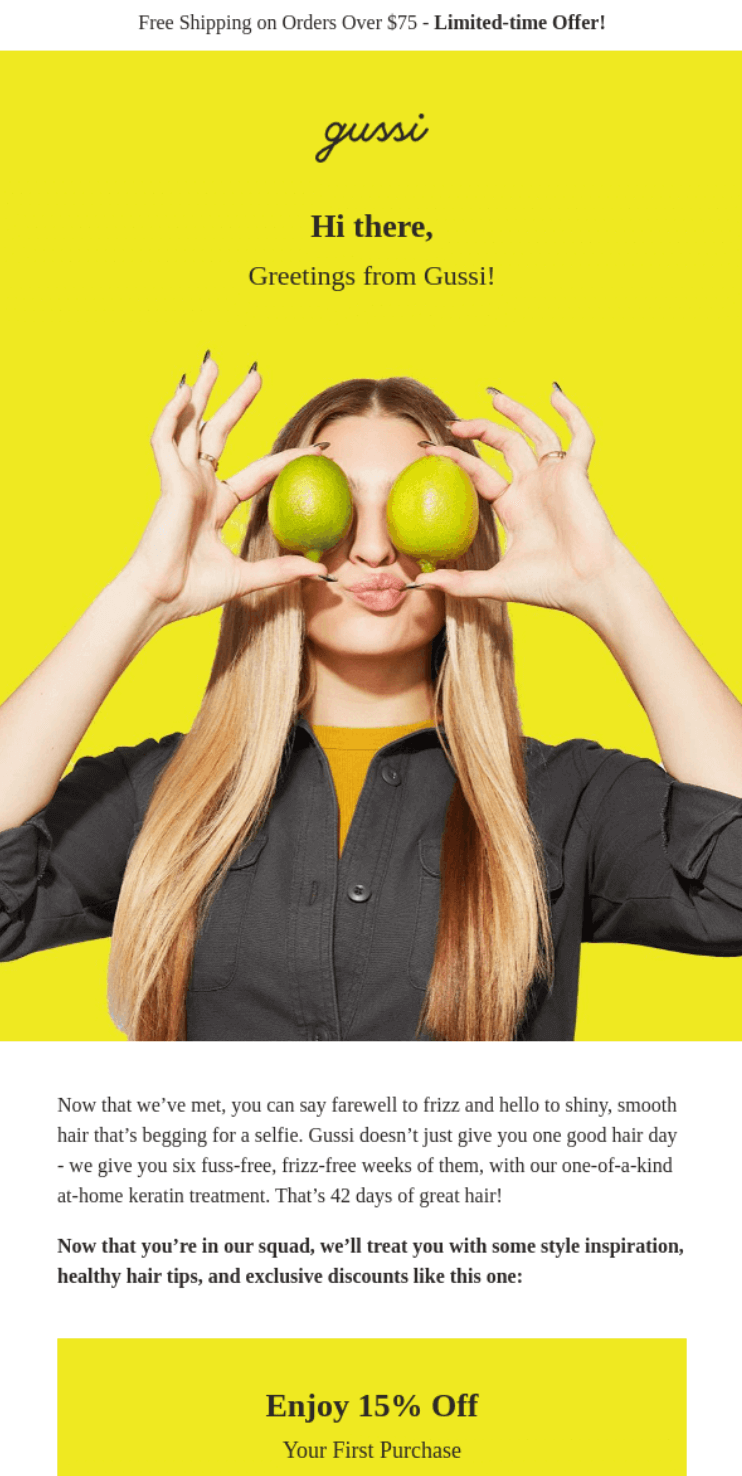
- Subject line: Thanks for signing up!
- Email type: Welcome series campaign
Gussi welcomes new subscribers with personality-packed messaging and an immediate 15% discount.
The playful lime-as-eyes imagery sets a fun tone while educational content about hair types provides value beyond the coupon. Multiple product benefits (coarse, curly, frizzy hair solutions) help different hair types find relevance.
What stood out to me
“Now that we’ve met, you can say farewell to frizz and hello to shiny, smooth hair” creates a conversational relationship from the start.
Yellow highlighting for key benefits makes scanning easy, while addressing multiple hair concerns (coarse, uneven, lackluster) ensures most subscribers find something relevant. The code “WELCOMEBGB49PPN” feels exclusive rather than generic, encouraging immediate use.
2. Bellroy
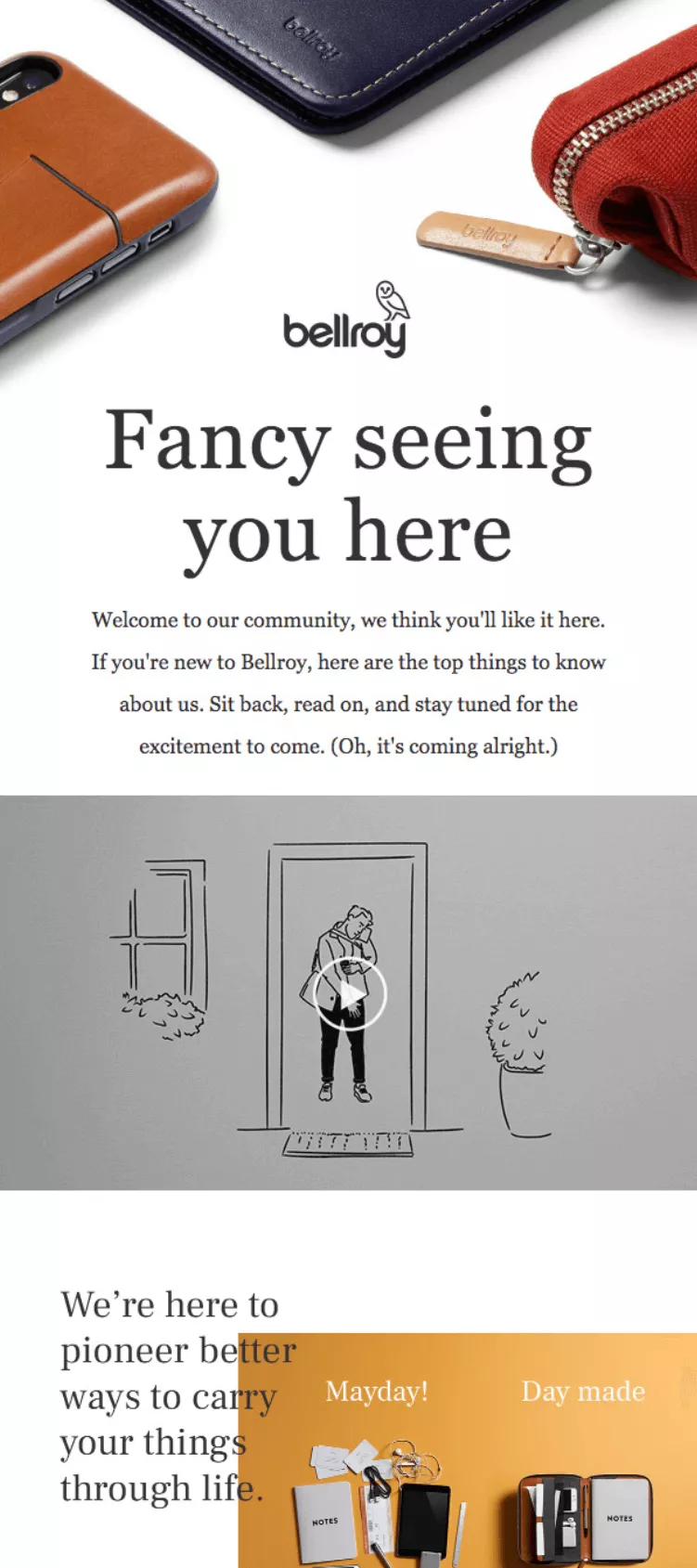
- Subject line: You’re in! Welcome to the family
- Email type: Welcome series campaign
Bellroy introduces new subscribers to its product range with a visual showcase of wallets, bags, and accessories. Rather than pushing immediate sales, the email educates about product categories and brand values.
Its clean design with lifestyle imagery shows products in use, helping subscribers understand how Bellroy fits their daily life.
What stood out to me
Bellroy nails the balance between showing products and telling stories. Each category gets breathing room with real-world photography — architects at work, travelers in airports — making products feel essential rather than optional.
I also appreciate how it resists discount codes in favor of building desire with quality and design details.
3. Help For Heroes
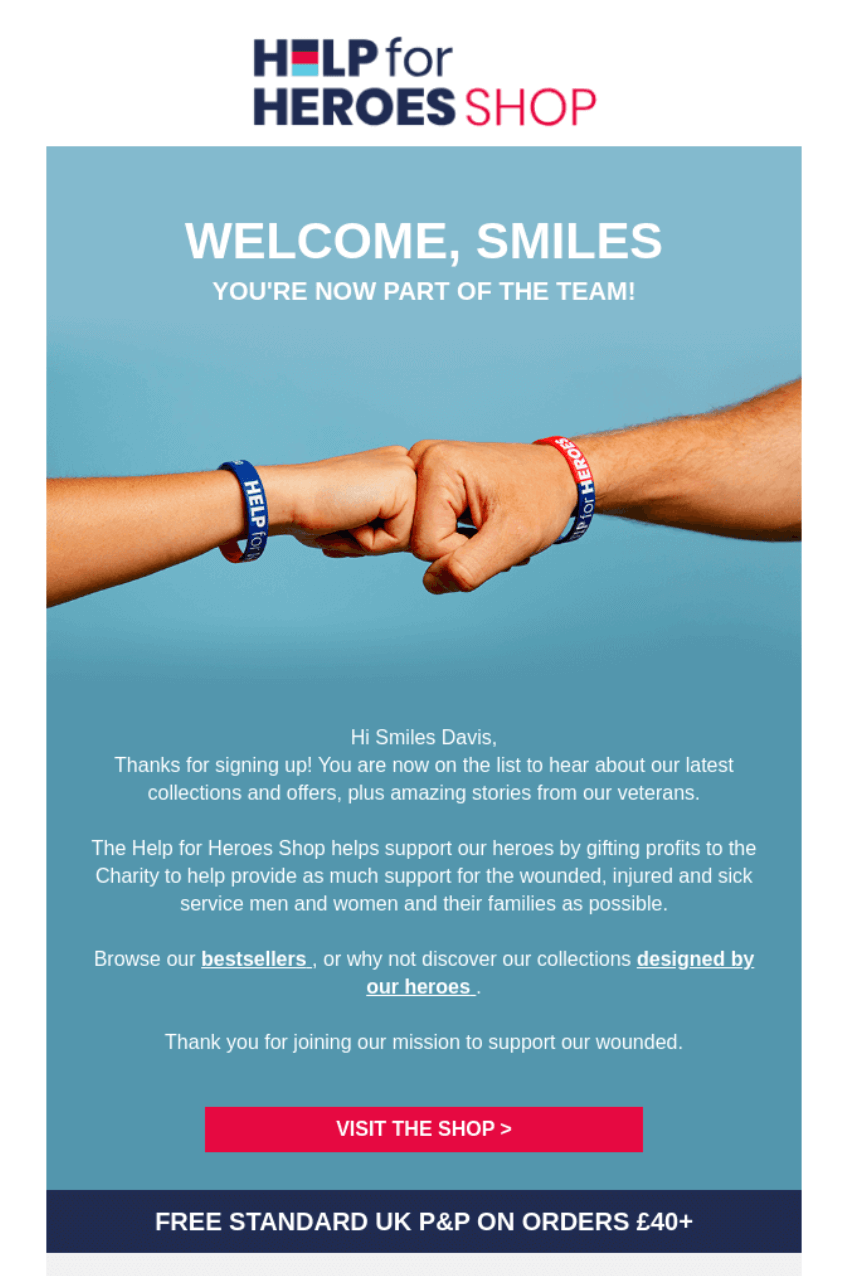
- Subject line: Thank you for signing up!
- Email type: Welcome series campaign
Help for Heroes Shop welcomes subscribers by immediately connecting them to the charity’s mission. The fist-bump image reinforces “YOU’RE NOW PART OF THE TEAM” messaging while explaining how purchases support wounded veterans.
Actionable navigation to bestsellers and hero-designed collections helps new subscribers find meaningful products quickly.
What stood out to me
Personalizing with “WELCOME, SMILES” and explaining the charity connection upfront builds emotional investment before showing products.
I particularly like how it positions shopping as joining a mission rather than just buying merchandise. The 4.9/5 Trustpilot rating at the bottom provides social proof right when new subscribers might question legitimacy.
4. Tripadvisor
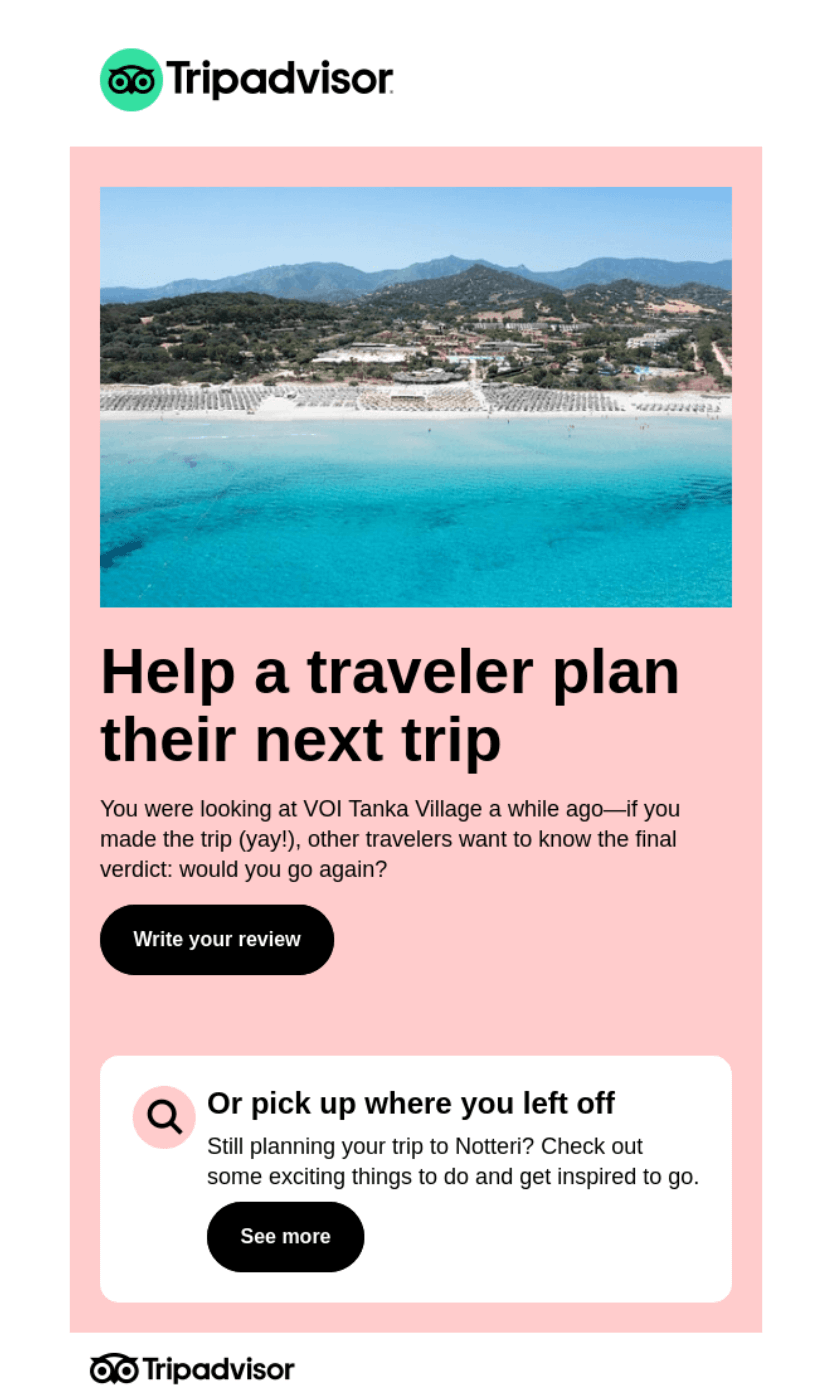
- Subject line: Did you go to Notteri?
- Email type: Survey and feedback campaign
Tripadvisor provides one of my favorite email campaign examples. It asks past viewers to review VOI Tanka Village, using browsing history to request relevant feedback. Its timing catches travelers after their trip when memories remain fresh.
Offering an alternative (“Or pick up where you left off”) respects that plans sometimes change, keeping non-travelers engaged with destination content.
What stood out to me
“Help a traveler plan their next trip” frames the review request as helping others, not just doing Tripadvisor a favor. Mentioning when they viewed the property (“a while ago”) and asking “would you go again?” feels conversational rather than transactional.
The backup option to explore Notteri attractions keeps the email valuable even for those who have never visited.
5. Tillamook
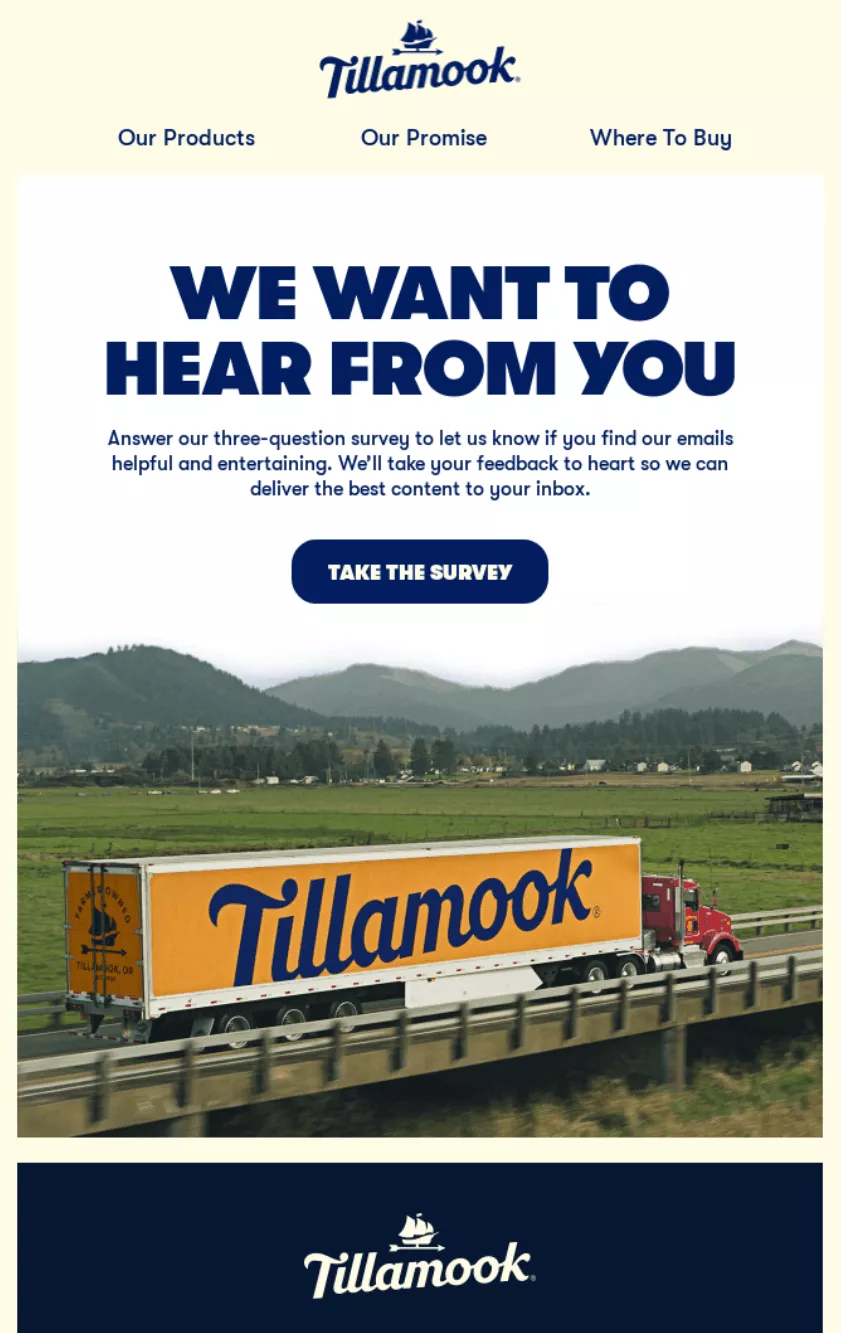
- Subject line: Your Feedback Is Important to Us
- Email type: Survey and feedback campaign
Tillamook keeps its survey request direct with just three questions. Promising to “take your feedback to heart” shows subscribers their opinions matter for future content.
The scenic farm imagery reminds customers of Tillamook’s authentic roots, while the clear CTA button makes participation easy.
What stood out to me
“WE WANT TO HEAR FROM YOU” in bold caps grabs attention without feeling aggressive. I appreciate how Tillamook frames the survey as helping subscribers get better content, not just collecting data.
Mentioning it’s only three questions respects people’s time — a crucial detail that likely increases completion rates compared to vague “quick survey” promises.
6. Best Day Brewing
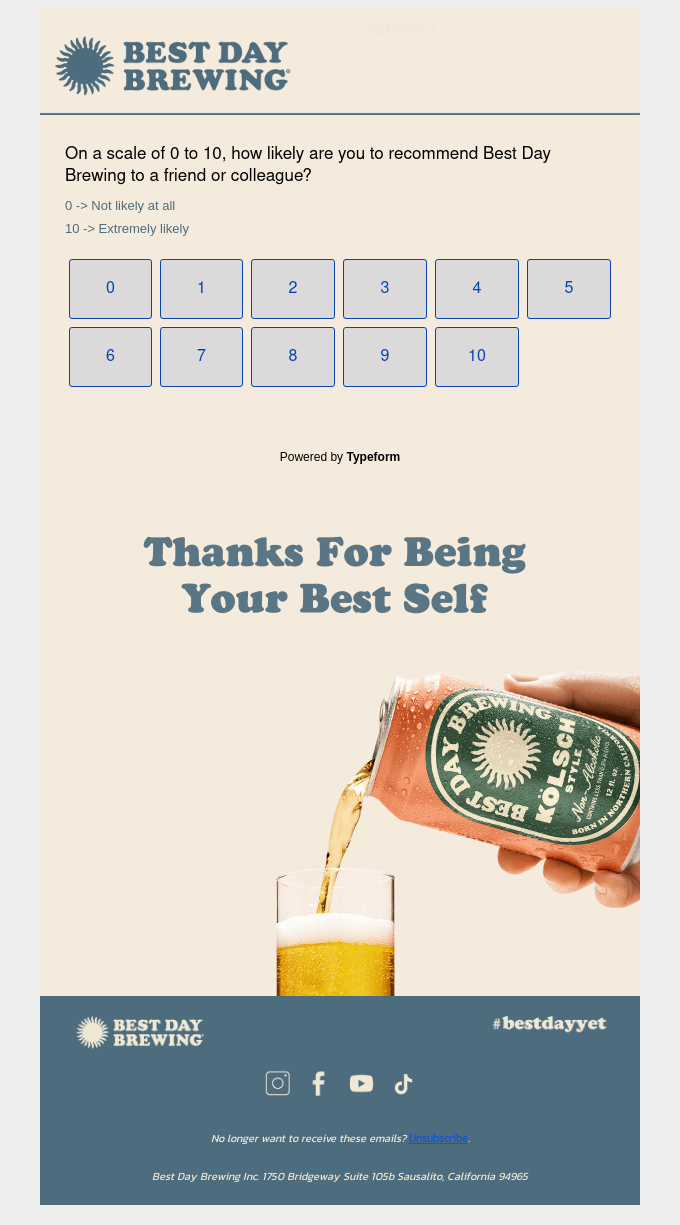
- Subject line: Can We Ask You One Question? 🙏
- Email type: Survey and feedback campaign
Best Day Brewing uses a Net Promoter Score (NPS) survey to measure customer loyalty with a straightforward question.
The 0–10 scale makes responding quick, while “Thanks For Being Your Best Self” reinforces brand messaging. A clean design with numbered buttons reduces friction, encouraging higher response rates than traditional survey formats.
What stood out to me
Starting with the actual survey question immediately respects subscribers’ time — no lengthy introductions or explanations needed. The playful closing “Thanks For Being Your Best Self” ties back to Best Day’s alcohol-free positioning, making even a survey feel on-brand.
Using large, clickable number buttons instead of radio buttons or dropdowns makes mobile responses effortless.
7. Confused.com
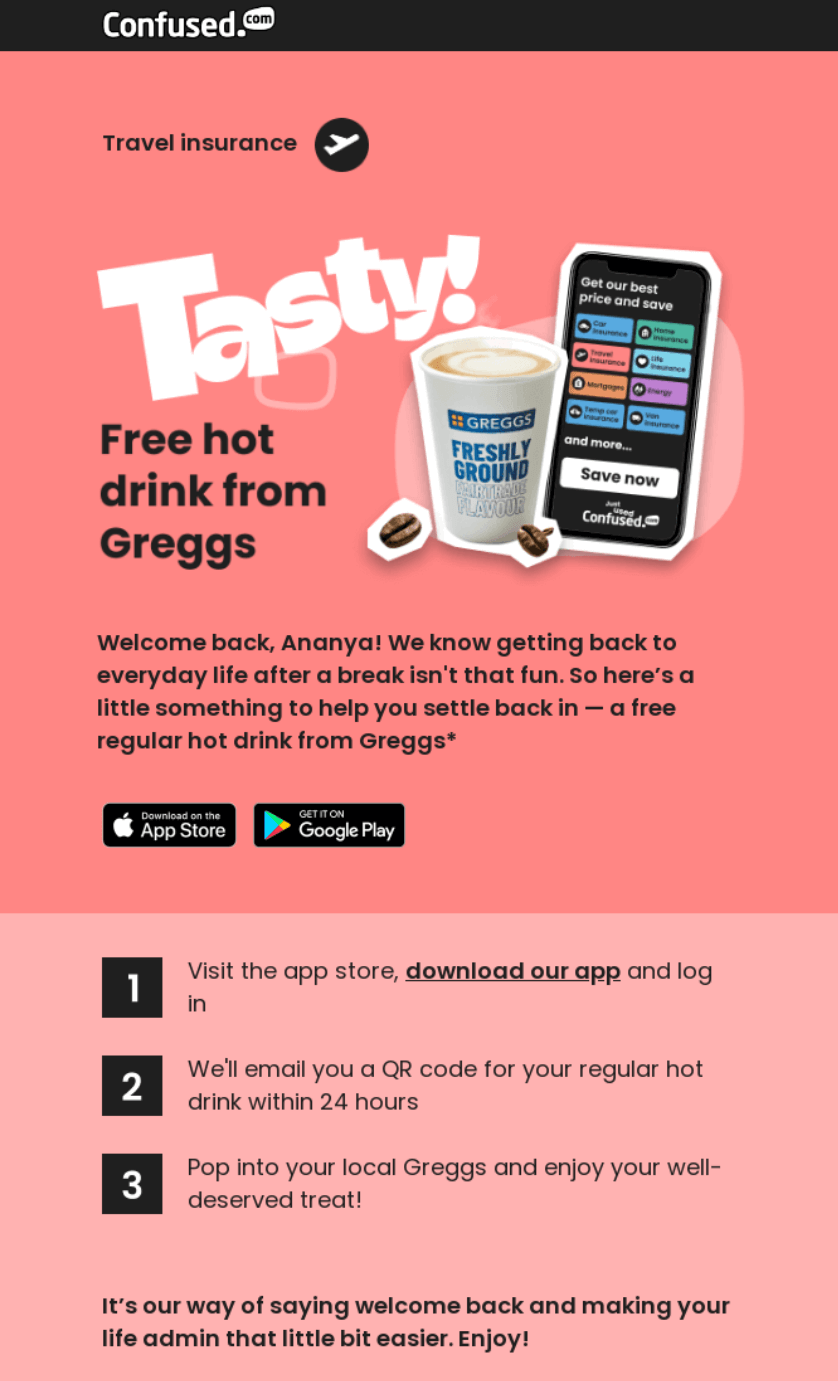
- Subject line: Welcome back! Here’s a treat just for you ☕
- Email type: Re-engagement campaign
Confused.com wins back dormant customers by offering a free hot drink from Greggs. Partnering with a popular brand creates immediate value for subscribers while encouraging app downloads and account reactivation.
Clear numbered steps make redemption simple, turning a freebie into genuine re-engagement with the travel insurance platform.
What stood out to me
“Welcome back! Here’s a treat just for you ☕” perfectly balances friendliness with incentive. I love how Confused.com acknowledges post-holiday blues before presenting the solution — it shows understanding of the customer mindset.
Bold numbered steps eliminate confusion about claiming the offer, crucial when you want returning customers to follow through rather than abandon halfway.
8. ASICS
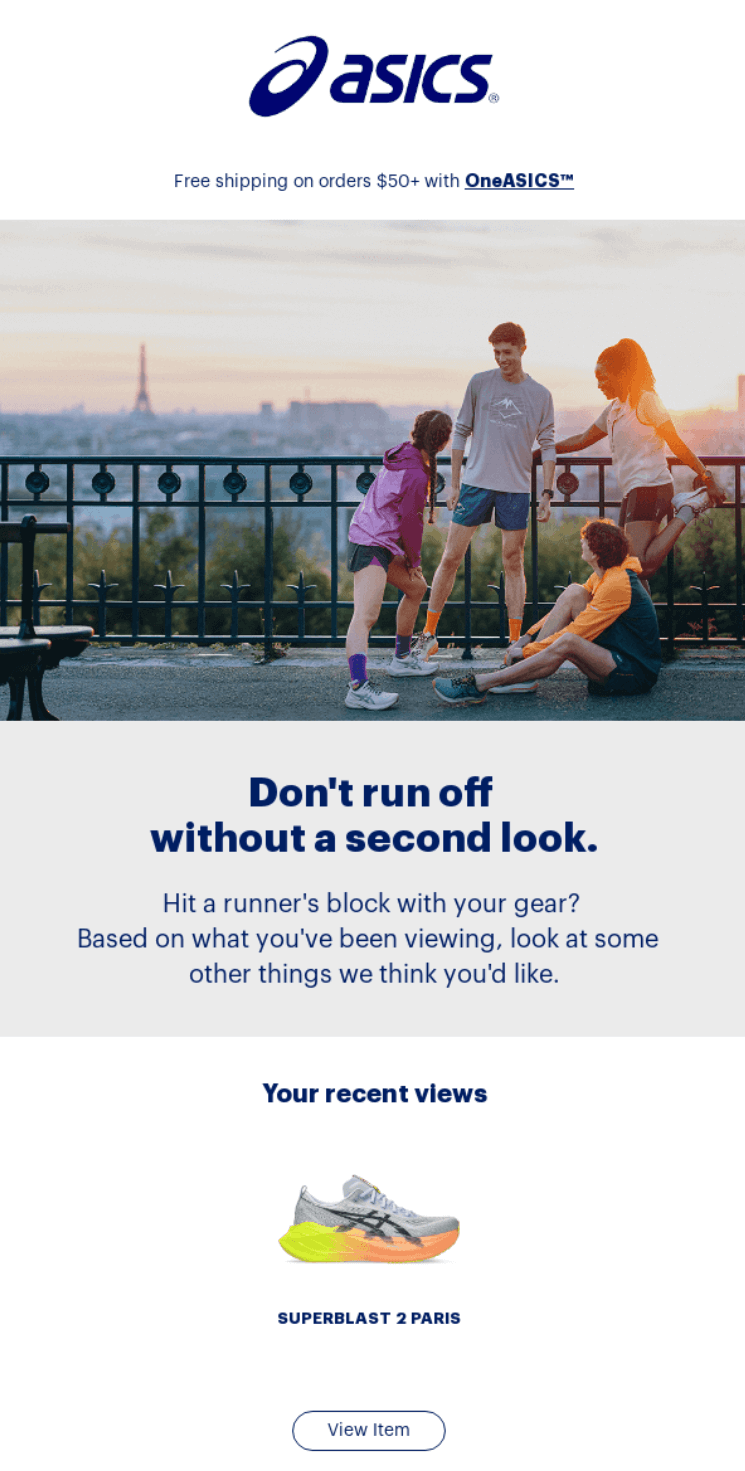
- Subject line: Come back and take another look.
- Email type: Re-engagement campaign
ASICS targets shoppers who browsed but didn’t buy with personalized product recommendations. Showing recently viewed items alongside similar gear creates multiple chances for conversion.
Free shipping on orders over $50 sweetens the deal, while OneASICS membership benefits remind customers why staying engaged pays off.
What stood out to me
“Don’t run off without a second look” cleverly plays on ASICS’s running heritage while addressing cart abandonment. I appreciate how it shows the shoe that was viewed as well as related options — providing choice without overwhelming.
Multiple CTAs at different price points ($50+, $100+, clearance) meet customers wherever their budget lands, maximizing chances for re-engagement.
9. NOOM
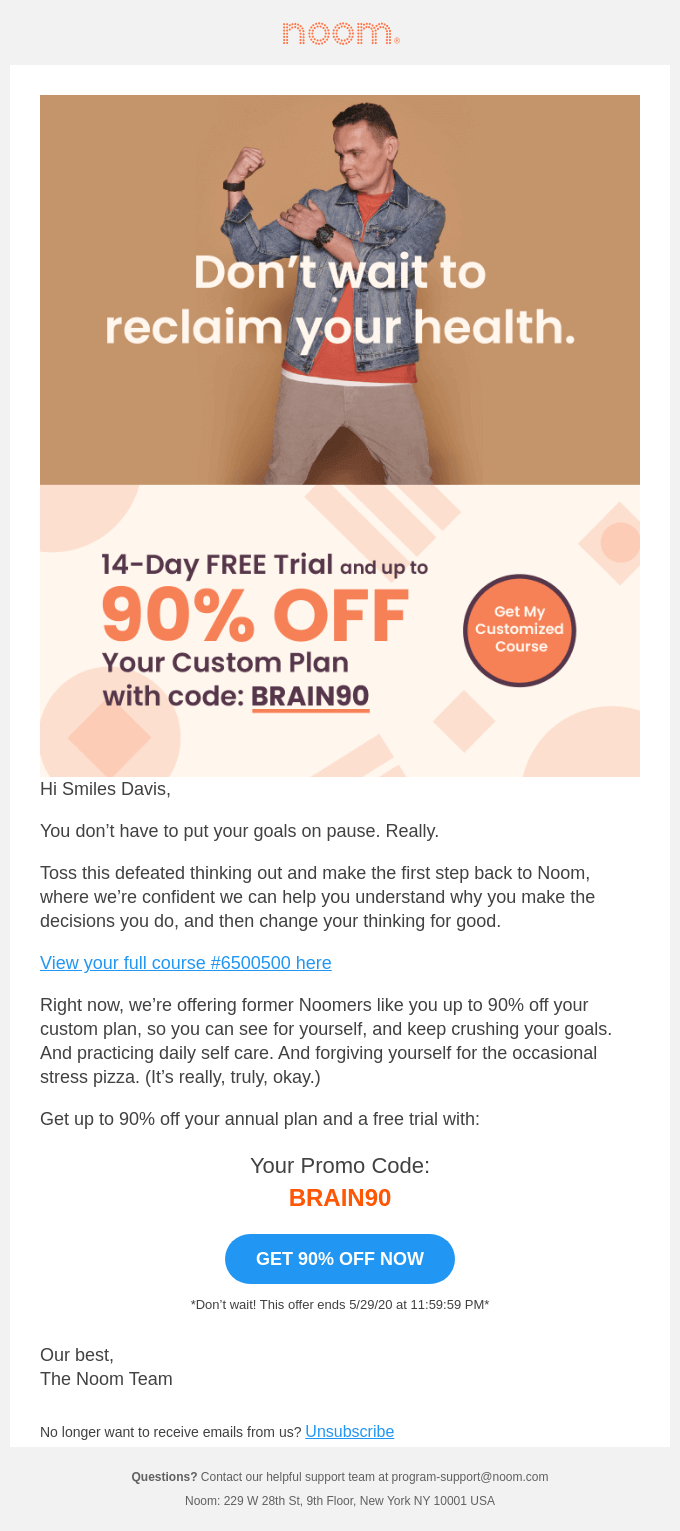
- Subject line: Come back to get your Custom Plan for up to 90% Off
- Email type: Re-engagement campaign
Noom targets lapsed users with a massive discount and personalized approach. Starting with empathy (“You don’t have to put your goals on pause. Really.”) acknowledges why people drift away.
The 14-day free trial plus 90% off removes financial barriers, while referencing past courses shows that Noom remembers individual user journeys.
What stood out to me
Opening with “Hi Smiles Davis” and mentioning course #6500500 makes this feel like a personal check-in, not a mass email. I particularly like the casual parenthetical “(It’s really, truly, okay.)” about stress pizza — it shows Noom understands that real life happens.
The countdown creates urgency without feeling aggressive, perfect for motivating procrastinators to restart their health journey.
10. Wimp Decaf Coffee Co.
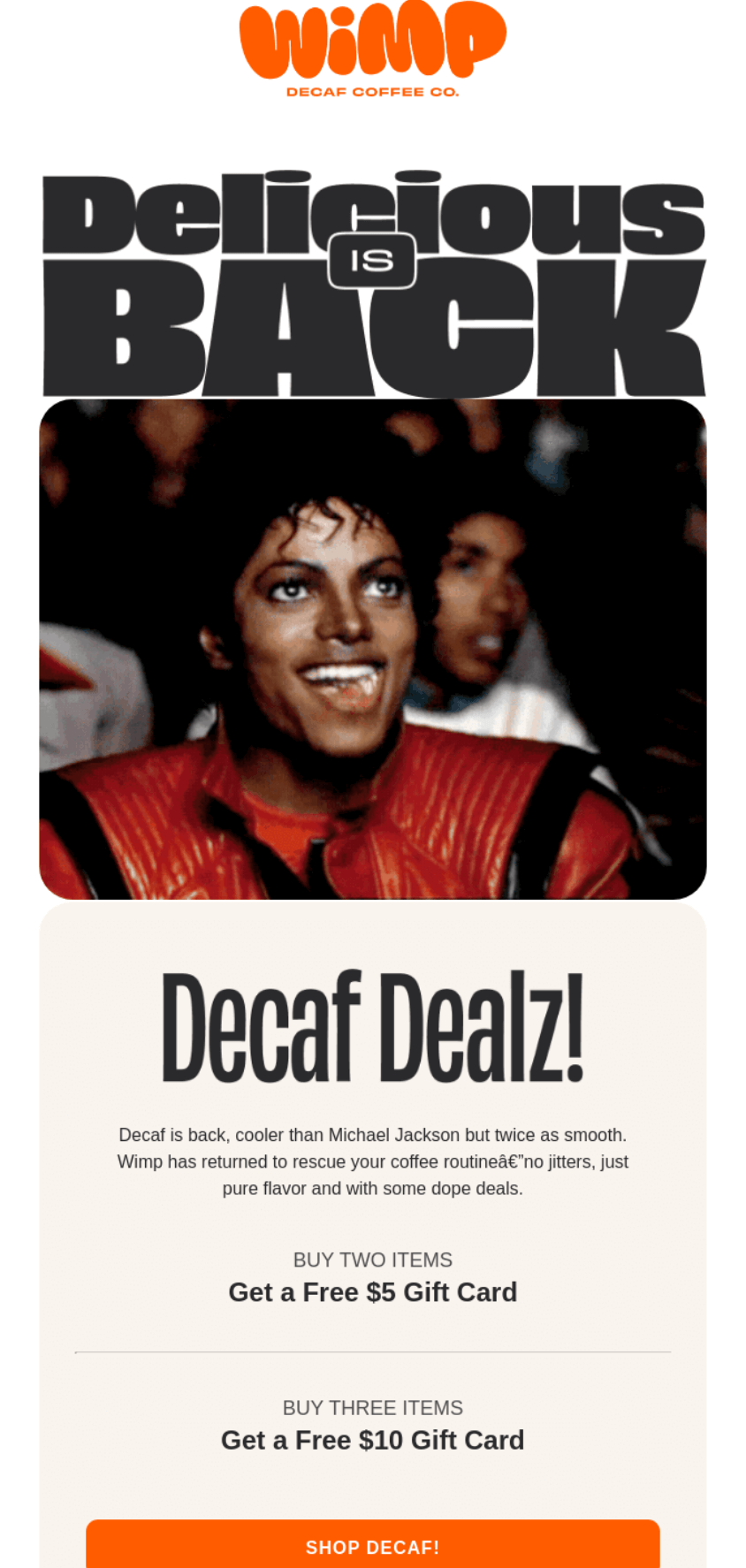
- Subject line: New January Decaf Dealz
- Email type: Back-in-stock campaign
Wimp Decaf Coffee Co. alerts subscribers about restocked decaf coffee with special January pricing. Three roast options (Coltrane, Kahlo, Kubrick) give variety while the Michael Jackson GIF adds playful energy.
The free $5 and $10 gift cards after purchasing multiple items sweetens the deal, making it easy to try decaf or gift to coffee-loving friends.
What stood out to me
“Delicious is BACK,” paired with the Thriller-era MJ, creates unexpected nostalgia that grabs attention. Offering multiple roast profiles shows Wimp takes decaf seriously, not as an afterthought.
The gift card options with free shipping remove barriers for hesitant decaf drinkers — clever positioning for a product some coffee lovers dismiss.
11. Organic Basics
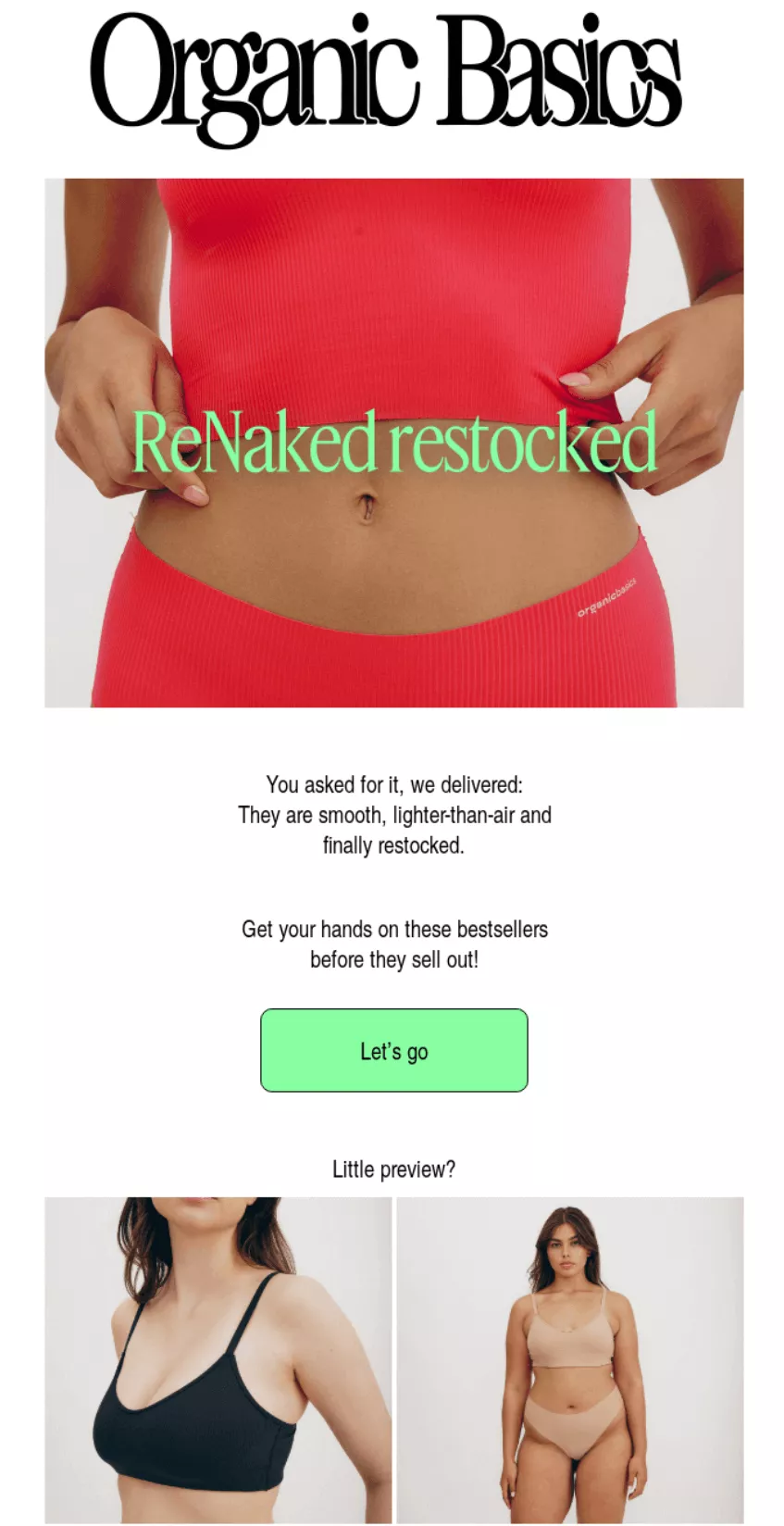
- Subject line: Restock Alert
- Email type: Back-in-stock campaign
Organic Basics announces the return of ReNaked underwear with straightforward messaging and product imagery. Showing multiple colorways and styles on diverse models helps shoppers quickly identify their preferences.
The Organic Basics Club promotion adds value beyond the restock, encouraging signups with points, discounts, and rewards.
What stood out to me
“You asked for it, we delivered,” acknowledges customer demand, making subscribers feel heard. The bright green CTAs pop against minimal design, creating clear action paths without cluttering the layout.
Including both “Let’s go” for immediate shoppers and “Take me there” for browsers gives different customer mindsets appropriate options.
12. Better Booch
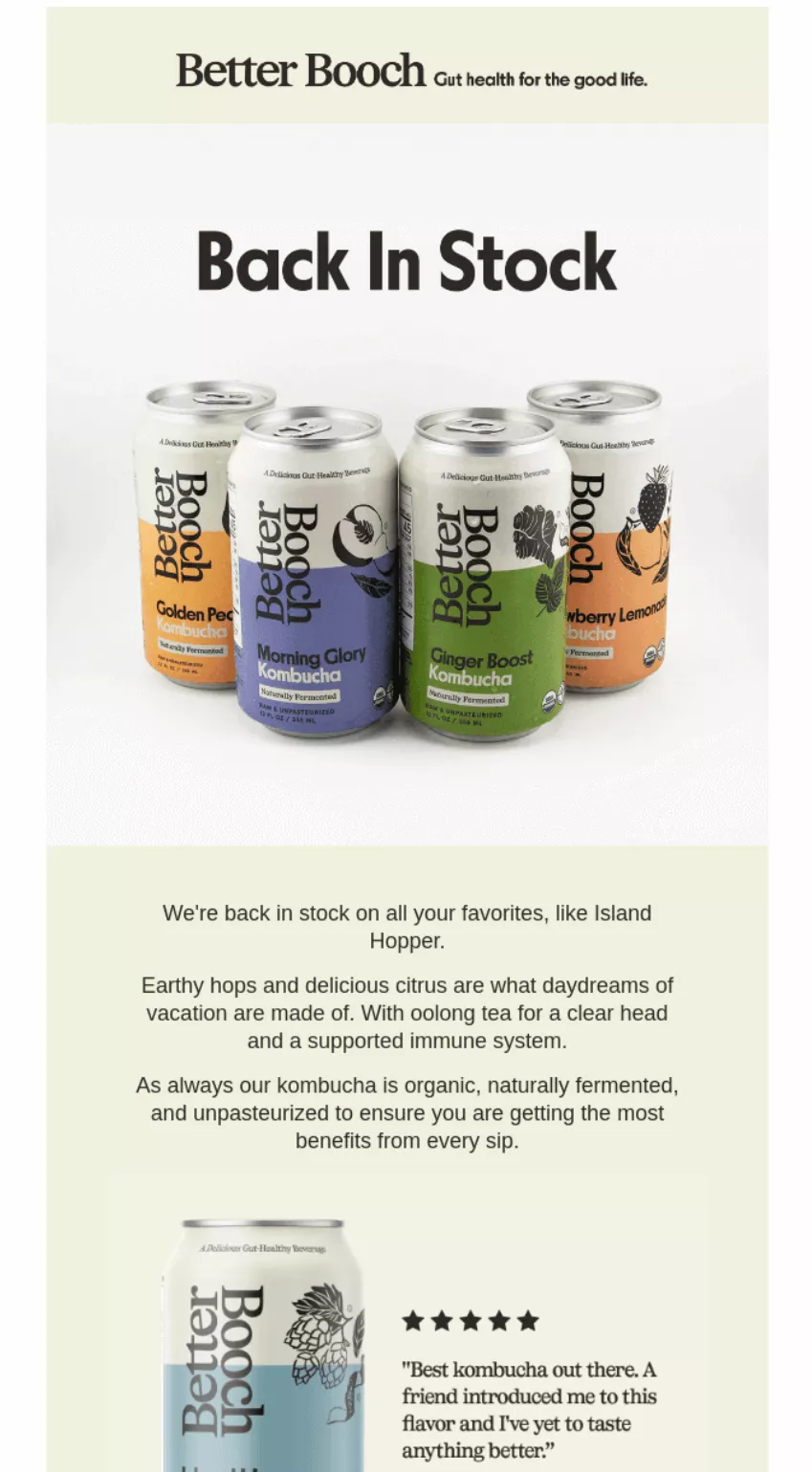
- Subject line: Back in Stock on All Your Favorites
- Email type: Back-in-stock campaign
Better Booch announces the return of popular kombucha flavors with a focus on Island Hopper. High-quality product photography showcases all available flavors while copy connects oolong tea benefits to vacation vibes.
Nick’s five-star review provides social proof right when shoppers need reassurance about trying kombucha.
What stood out to me
Leading with “We’re back in stock on all your favorites, like Island Hopper,” acknowledges which products customers wanted.
I appreciate how Better Booch educates about ingredients (oolong tea benefits) without getting preachy. The customer testimonial feels authentic — “I’ve yet to taste anything better” from a real person named Nick beats generic marketing claims.
13. KIZIK
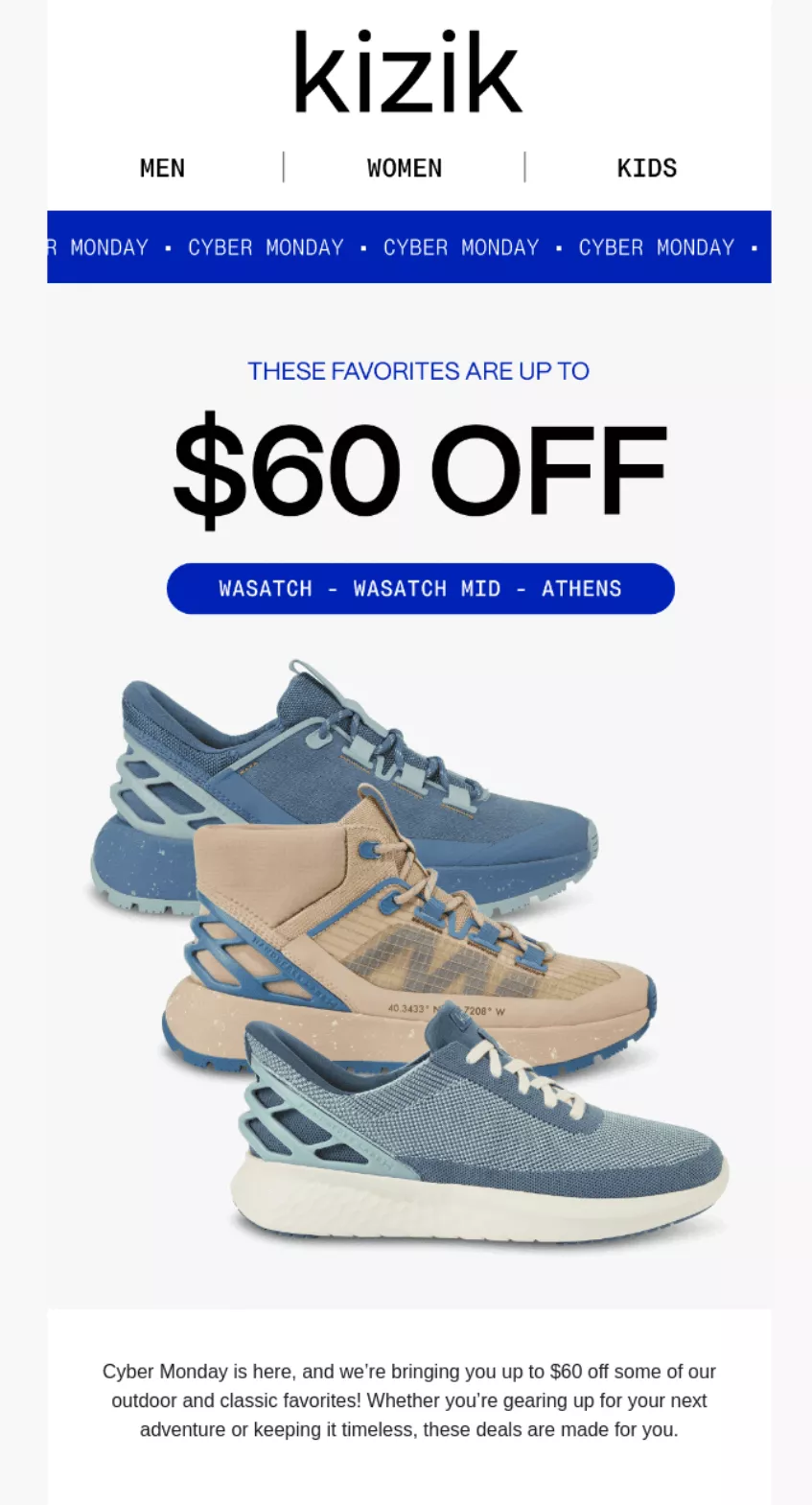
- Subject line: EARLY Cyber Monday deals just dropped!
- Email type: Seasonal campaign
Kizik showcases hands-free shoes with up to $60 off for Cyber Monday shoppers. Multiple styles (Wasatch, Wasatch Mid, Athens) at different price points give options for every budget.
Its product grid layout makes browsing easy while “SEE DEALS” buttons create obvious paths to purchase.
What stood out to me
Starting deals before actual Cyber Monday captures eager shoppers who hate waiting. I like how Kizik displays original prices with sale prices — seeing “$80 off” or “$60 off” tags makes the value apparent.
The question “Know someone who struggles with their hiking shoes?” at the bottom cleverly positions these as gift options, doubling its market.
14. Copper Cow Coffee
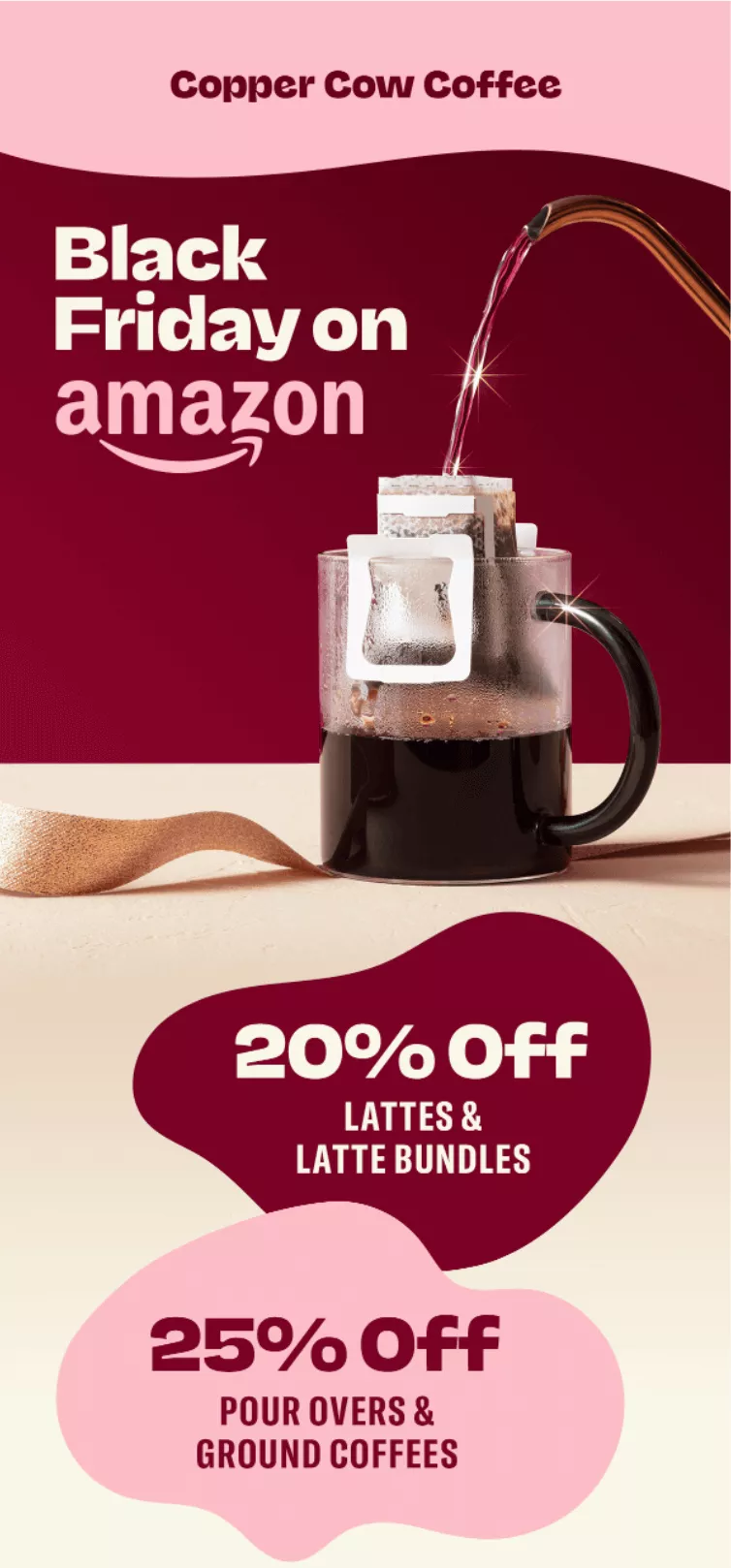
- Subject line: We’re on sale on Amazon too!
- Email type: Seasonal campaign
Copper Cow Coffee extends Black Friday deals to Amazon, acknowledging different shopping preferences.
Visual hierarchy with bold percentages (20% off lattes, 25% off pour-overs) makes savings clear instantly. The conversational copy admits its website sale ended, but offers Amazon as an alternative for procrastinators.
What stood out to me
“Our best deal of the year is over on our website rn, but if you need coffee like…now” reads like a text from a friend who gets it.
The “AMAZON IS LIFE” button leans into how people feel about Prime delivery during holidays, acknowledging that some customers prefer Amazon’s checkout and shipping.
15. OLIPOP
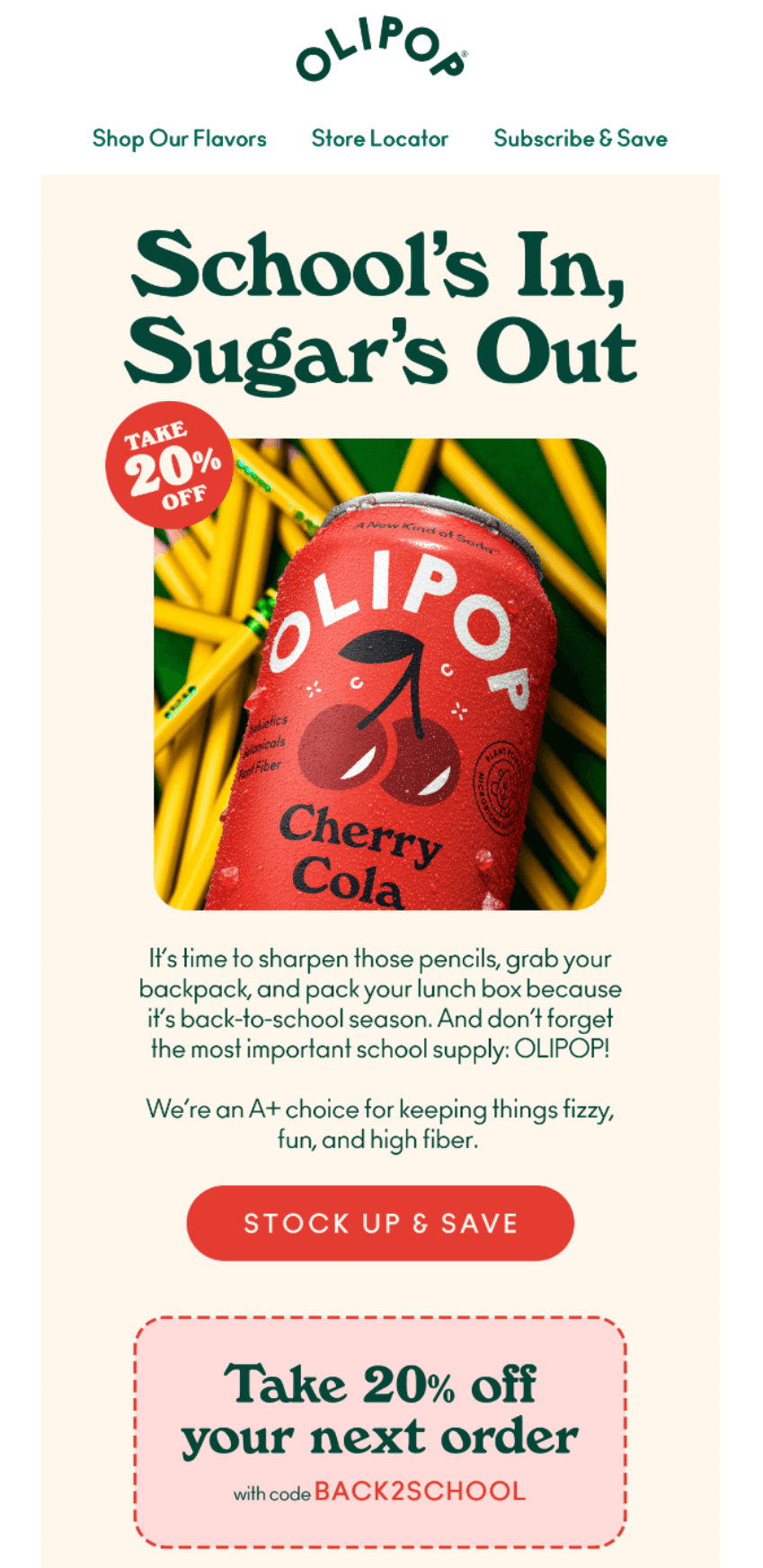
- Subject line: It’s back-to-school season! 🍎 📖
- Email type: Seasonal campaign
OLIPOP positions low-sugar soda as a back-to-school essential for parents packing healthier lunches.
Cherry Cola imagery with pencils creates the school connection, while 20% off with code BACK2SCHOOL drives immediate purchases. Its copy cleverly calls OLIPOP “the most important school supply” to justify the purchase.
What stood out to me
Calling OLIPOP “the most important school supply” made me laugh — it’s bold positioning that parents will either love or eye-roll at.
The code BACK2SCHOOL feels more memorable than generic discounts, tying directly to the season. I also noticed it chose Cherry Cola for the hero image, likely because it’s the most kid-friendly flavor for lunchbox appeal.
16. The Ordinary
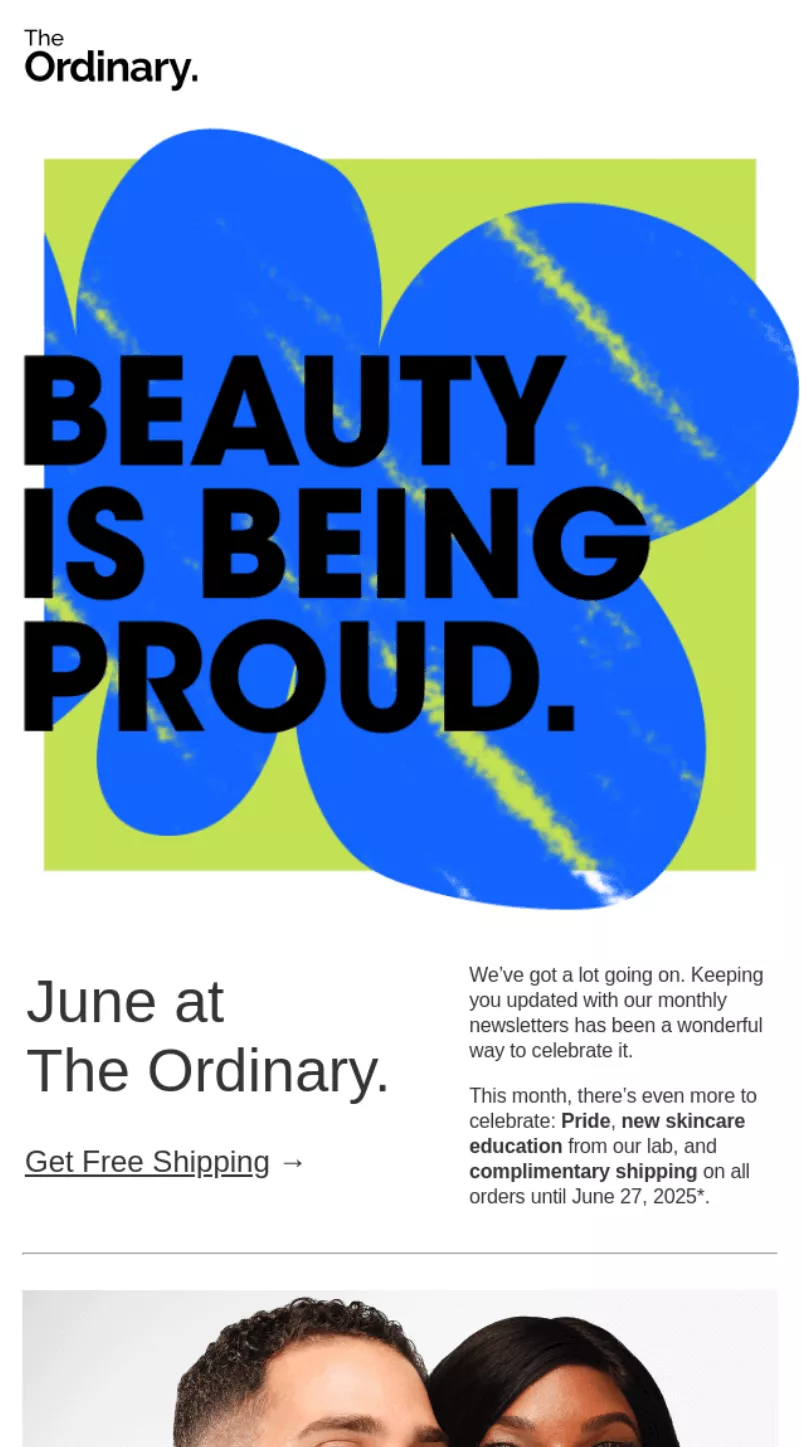
- Subject line: The O. Newsletter: June.
- Email type: Newsletter campaign
The Ordinary celebrates Pride month with “BEAUTY IS BEING PROUD” messaging while highlighting skincare education and product benefits.
Content mixes celebration with science — explaining pycnogenol benefits and glass skin techniques. Free shipping promotion runs throughout June, making it easy for readers to try featured products.
What stood out to me
Leading with Pride celebration feels authentic, not performative, especially with donation mentions to The Center for Anti-Violence Education and GLAAD.
Product education takes center stage — explaining what pycnogenol does and how to achieve glass skin — rather than just listing items. The mix of advocacy, education, and commerce creates a newsletter worth reading beyond discount hunting.
17. Going
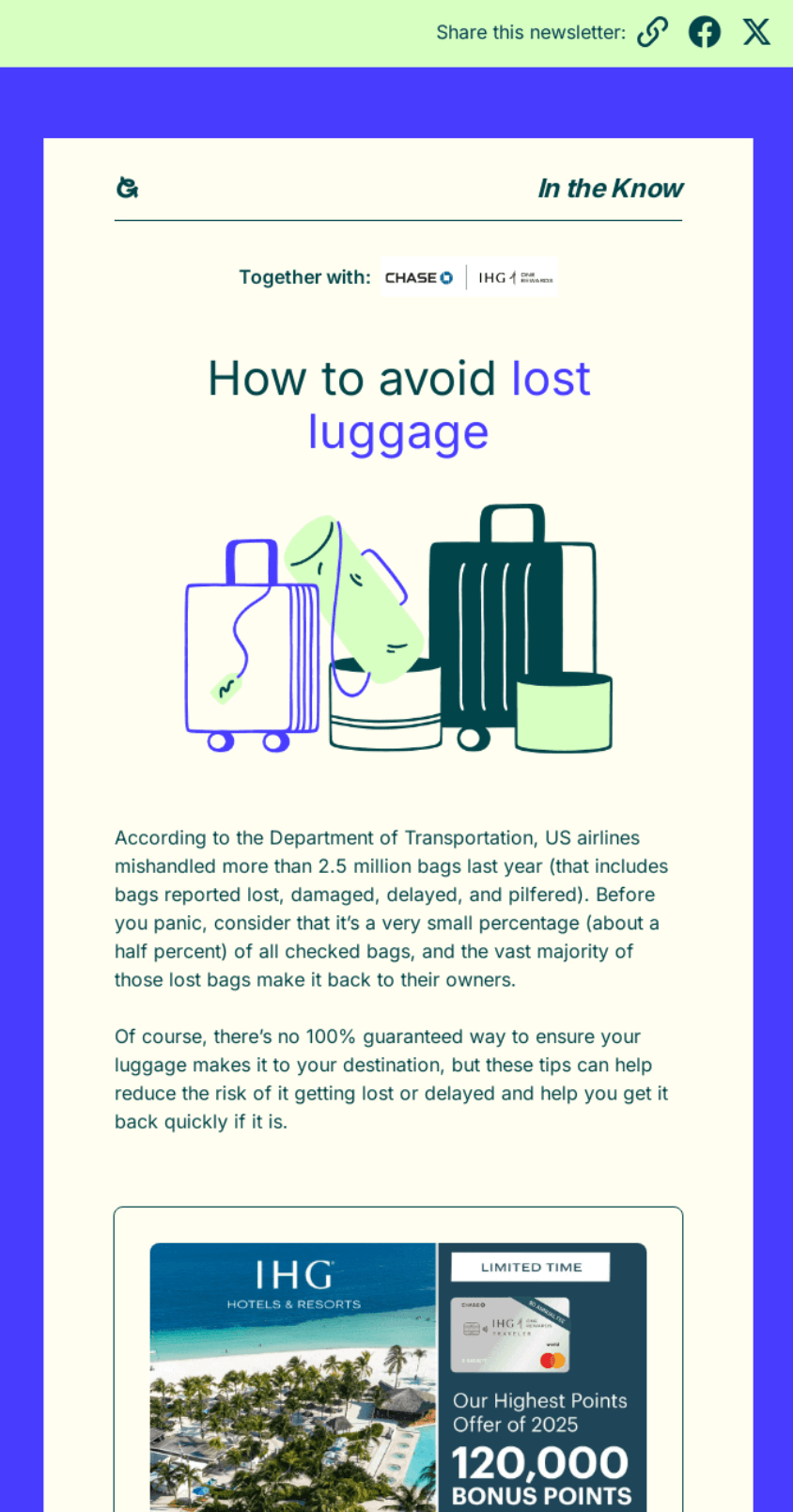
- Subject line: Don’t lose your luggage: 9 tips to help
- Email type: Newsletter campaign
Going provides practical travel advice with nine luggage protection tips, from choosing direct flights to using AirTags.
Content educates without selling, establishing Going as a travel resource beyond just flight deals. The $20,000 IHG sweepstakes adds value while encouraging engagement beyond reading tips.
What stood out to me
Going uses its travel expertise to help subscribers avoid common headaches — lost luggage anxiety resonates with every traveler.
Tips range from basic (direct flights) to tech-savvy (AirTag placement), appealing to different experience levels. Publishing helpful content between deal alerts keeps it top-of-mind as a trusted travel companion, not just a deals newsletter.
18. Ford

- Subject line: Hi, Smiles Davis. Your June newsletter has arrived.
- Email type: Newsletter campaign
Ford’s monthly newsletter covers home charging education, Mustang Mach-E features, and employee spotlights.
Its content balances product information with human stories — explaining EV charging alongside team member profiles. Multiple CTAs guide readers to specific interests without overwhelming them with sales pitches.
What stood out to me
Opening with “Making Power Moves in EV” educates nervous EV prospects about home charging logistics before they even shop. I appreciate Ford humanizing the brand through employee stories — seeing the actual people behind the products builds connection.
The Mustang Mach-E color options displayed visually let readers imagine ownership without pushy sales language.
19. Huel
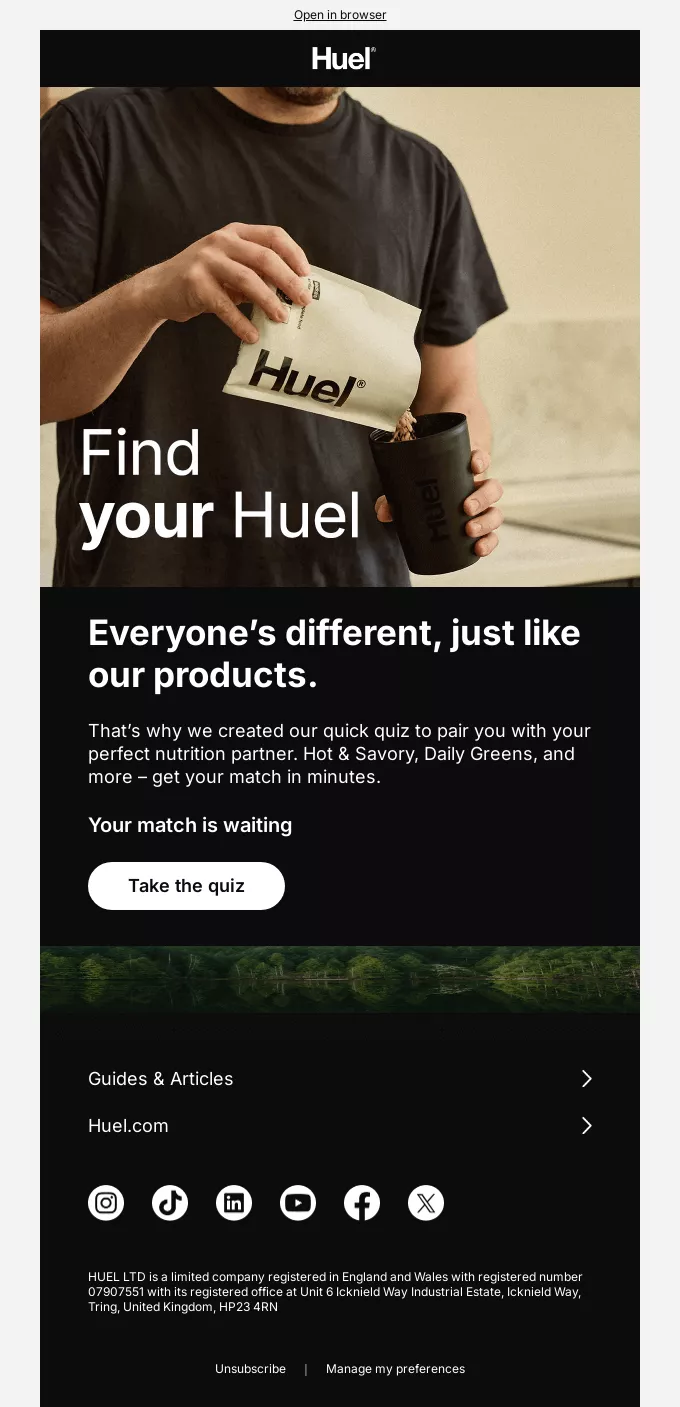
- Subject line: Hueligan, Your Match Is Waiting 🎯
- Email type: Product recommendation campaign
Huel uses a quiz to match customers with their ideal nutrition products from options like Hot & Savory or Daily Greens.
Rather than overwhelming newcomers with the complete product line, the quiz personalizes recommendations based on individual preferences. Simple imagery shows the product in use while minimal copy keeps focus on taking action.
What stood out to me
“Everyone’s different, just like our products,” acknowledges choice paralysis when facing multiple meal replacement options. Calling it “your perfect nutrition partner” makes the relationship feel personal, not transactional.
The quiz format turns product discovery into an interactive experience rather than passive browsing through a catalog.
20. Yellowbird
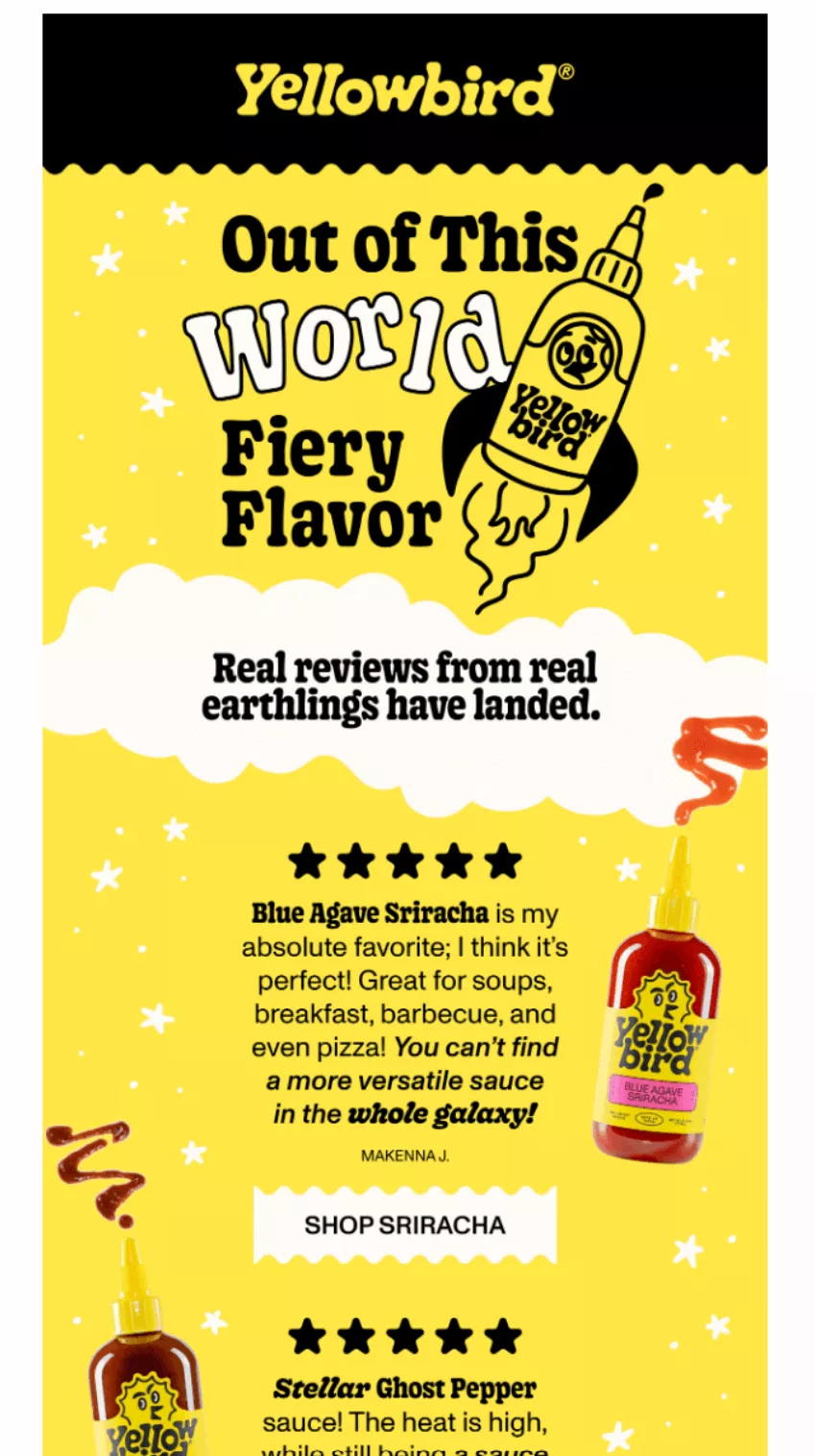
- Subject line: An Intergalactic Spice Adventure 🛸
- Email type: Product recommendation campaign
Yellowbird showcases four hot sauce varieties through customer reviews, letting real feedback guide product discovery.
Each sauce gets its moment with five-star ratings and use cases (sriracha for pizza, ghost pepper for everything). The playful space theme and retro design make browsing hot sauces feel like an adventure.
What stood out to me
Using customer quotes like “You can’t find a more versatile sauce in the whole galaxy!” is the most valuable part of the email — such high praise from an existing customer is very persuasive.
Each review mentions uses — breakfast, pizza, everything — helping readers pick based on their eating habits. “Leave the bottle out. You’ll want more.” captures the addictive nature of finding your perfect hot sauce.
21. The Sill
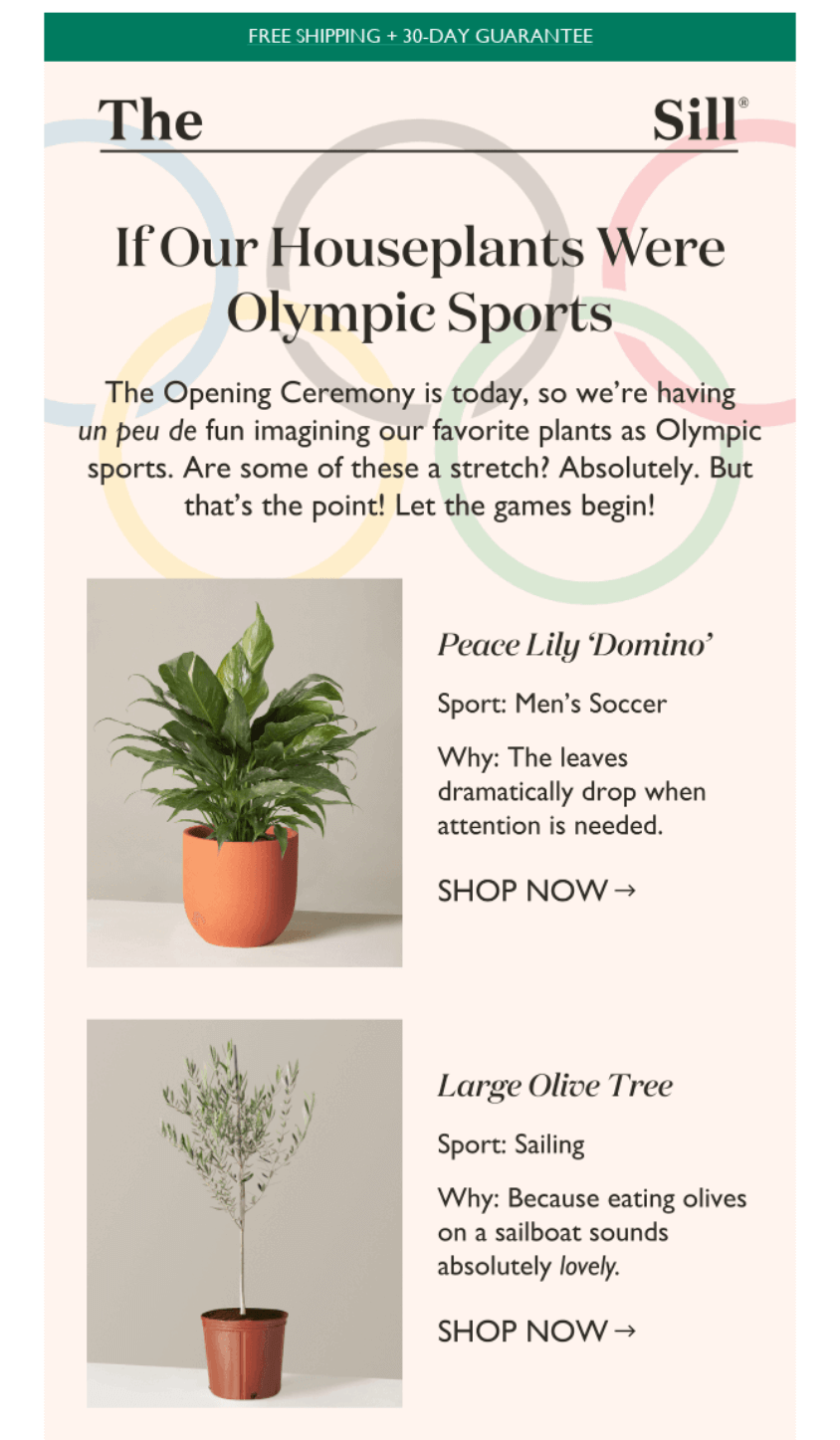
- Subject line: 🥇 Meet Our Athletes
- Email type: Product recommendation campaign
The Sill matches houseplants to Olympic sports based on their characteristics, making plant selection entertaining and memorable.
Each plant gets a sport assignment with clever reasoning — Peace Lily for soccer because “leaves dramatically droop when attention is needed,” Fiddle Leaf Fig for basketball because “everyone watches women’s sports.”
What stood out to me
Connecting plants to the Olympics during the Games season shows fantastic timing and cultural awareness. The humor lands perfectly — calling Snake Plant “low-light friendly” for golf and Princess Anne competing in equestrian since 1976.
Its approach makes plant shopping less intimidating for beginners who might not know which variety suits their lifestyle.
22. Fender
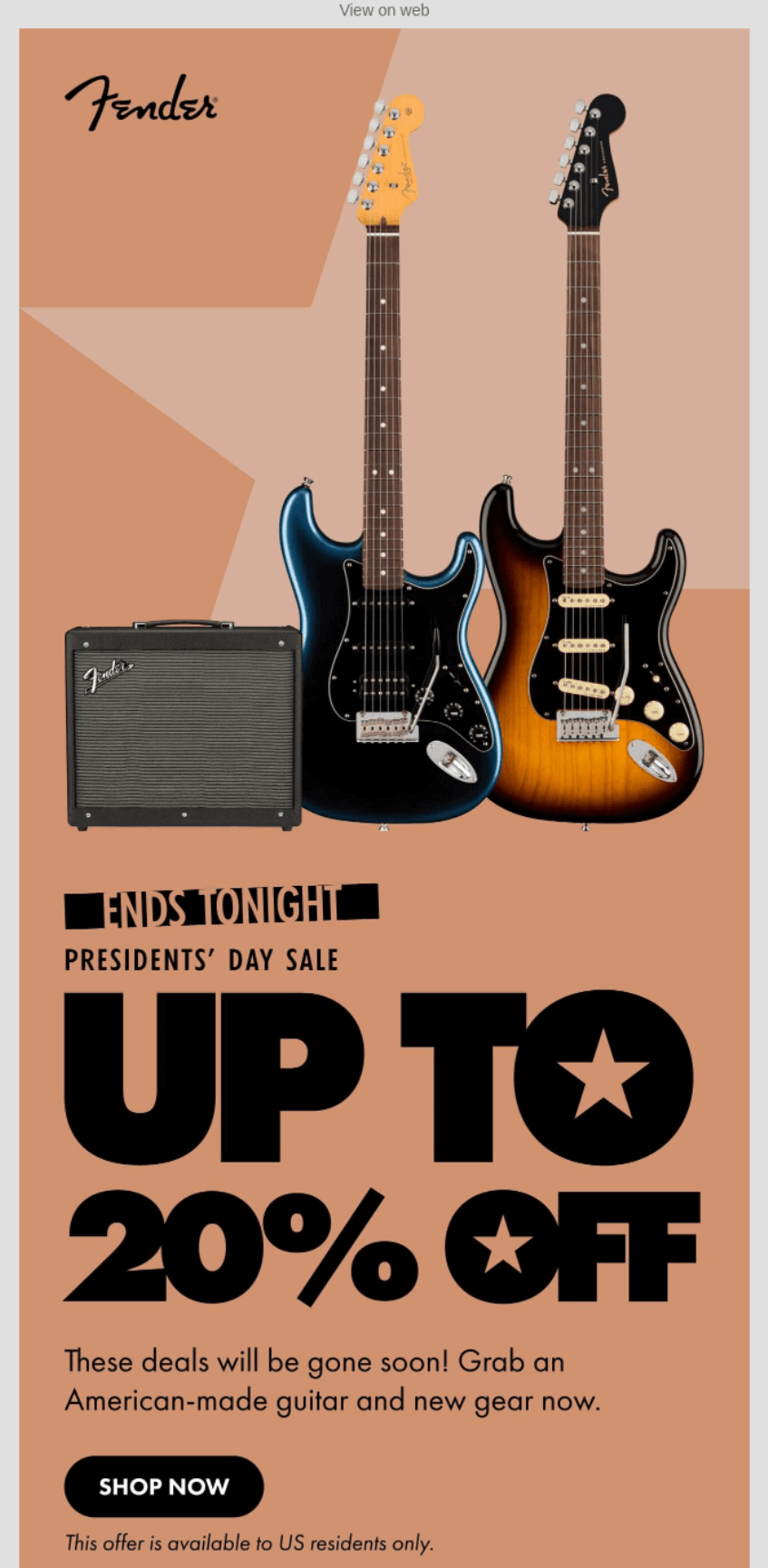
- Subject line: Ends TONIGHT 🎸 Our Presidents’ Day Sale Is Almost Over!
- Email type: Promotional campaign
Fender uses bold typography with “UP TO 20% OFF” filling the screen alongside iconic guitars and amps.
Geometric backgrounds in warm tones create visual interest without distracting from its products. The “ENDS TONIGHT” header and “gone soon” messaging push immediate action for its Presidents’ Day sale.
What stood out to me
Stars in the “UP TO” design cleverly reference the American flag for Presidents’ Day without being obvious. “These deals will be gone soon! Grab an American-made guitar and new gear now,” connects the holiday theme to product origin.
The US residents’ restriction adds exclusivity, while Klarna and Apple Pay options remove purchase friction at checkout.
23. Formula Fig
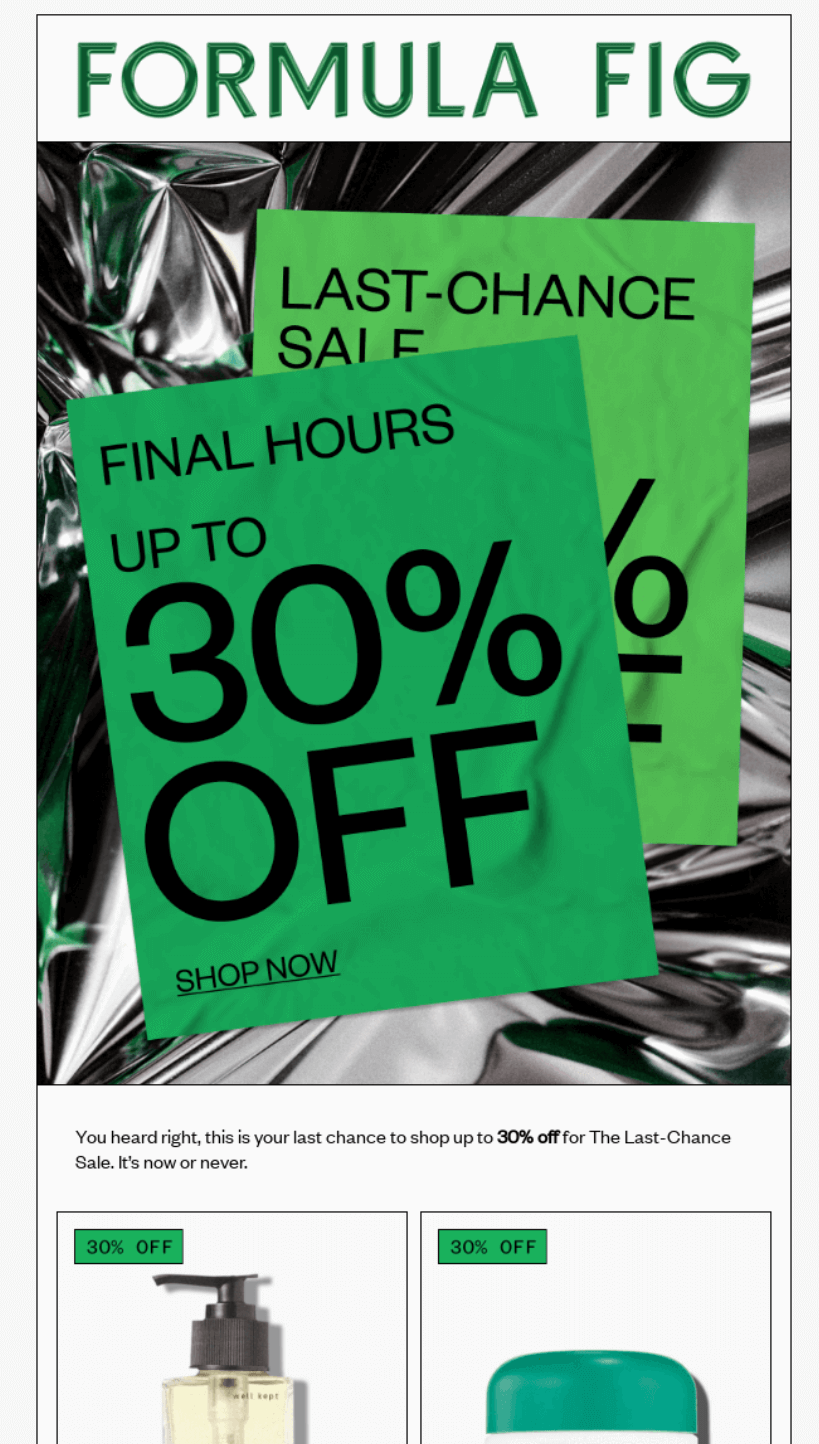
- Subject line: This is your last chance
- Email type: Promotional campaign
Formula Fig creates urgency with “FINAL HOURS” messaging for its Last-Chance Sale offering up to 30% off.
Its product grid showcases six bestsellers with discount percentages, making it easy to spot deals. Each item shows both original and sale prices, removing mental math for shoppers racing against the clock.
What stood out to me
Product blocks with individual discount percentages (10% OFF, 20% OFF) let shoppers quickly scan for their preferred savings level, plus the template includes both luxury items (Wonder Valley at higher prices) and accessible options, capturing different budget levels during the sale.
The “Give a fig about your skin” tagline at the bottom adds personality to the promotional email without distracting from the urgency.
24. Crawler
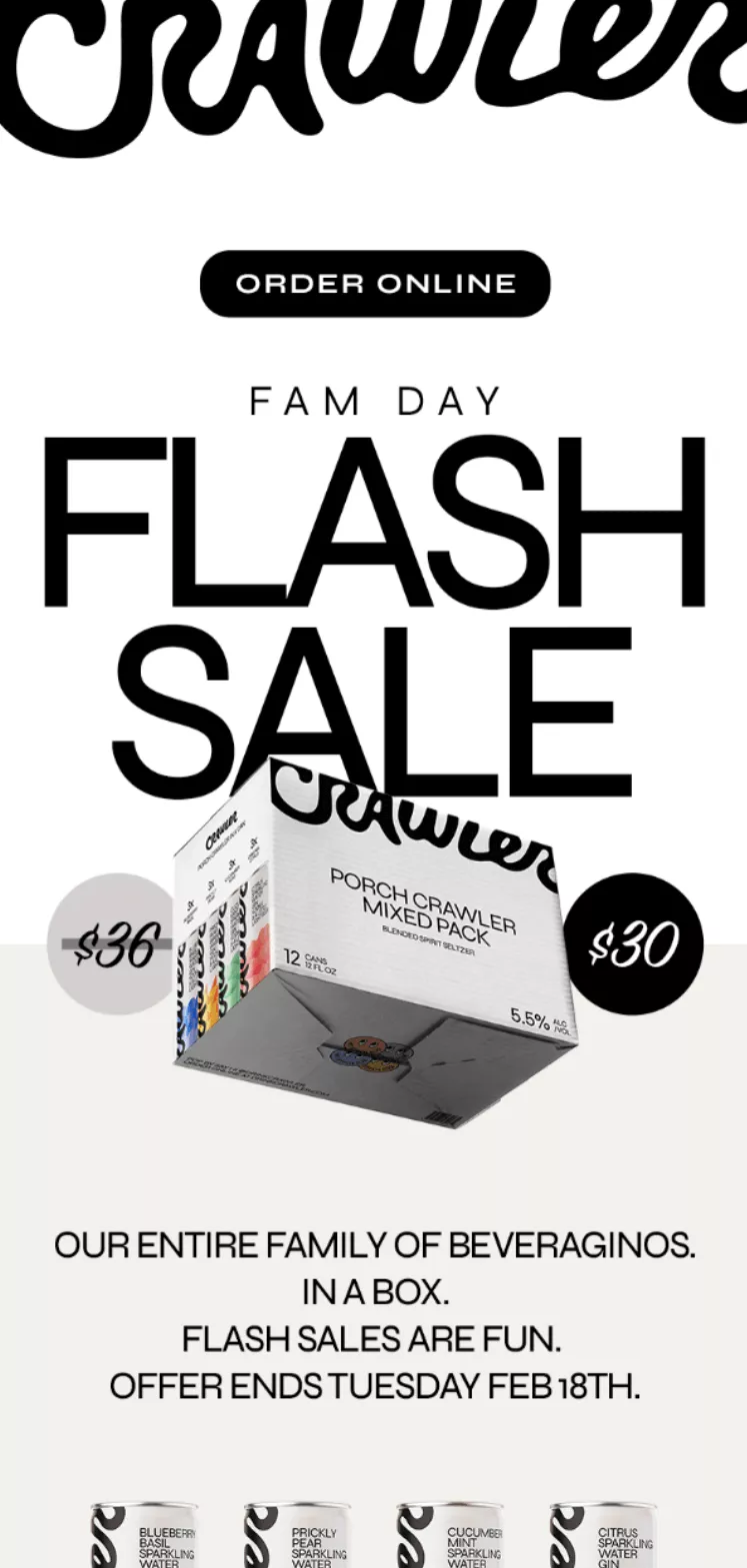
- Subject line: 🚨 FLASH SALE 🚨 $30 MIXED 12 PACKS
- Email type: Promotional campaign
Crawler strips its flash sale email to essentials — bold typography dominates with “FLASH SALE” taking center stage, with the minimal design letting the $30 price point and product shot do the selling.
The Tuesday deadline appears multiple times, creating urgency without cluttering the clean layout or distracting from the product image.
What stood out to me
Its black and white design with selective color makes the product packaging pop against stark backgrounds. I love how “FLASH SALES ARE FUN” breaks corporate speak — it feels like a friend texting about a deal.
Repeating “ORDER ONLINE” buttons at the top and bottom catches both quick scanners and those who read everything.
25. Wuffes
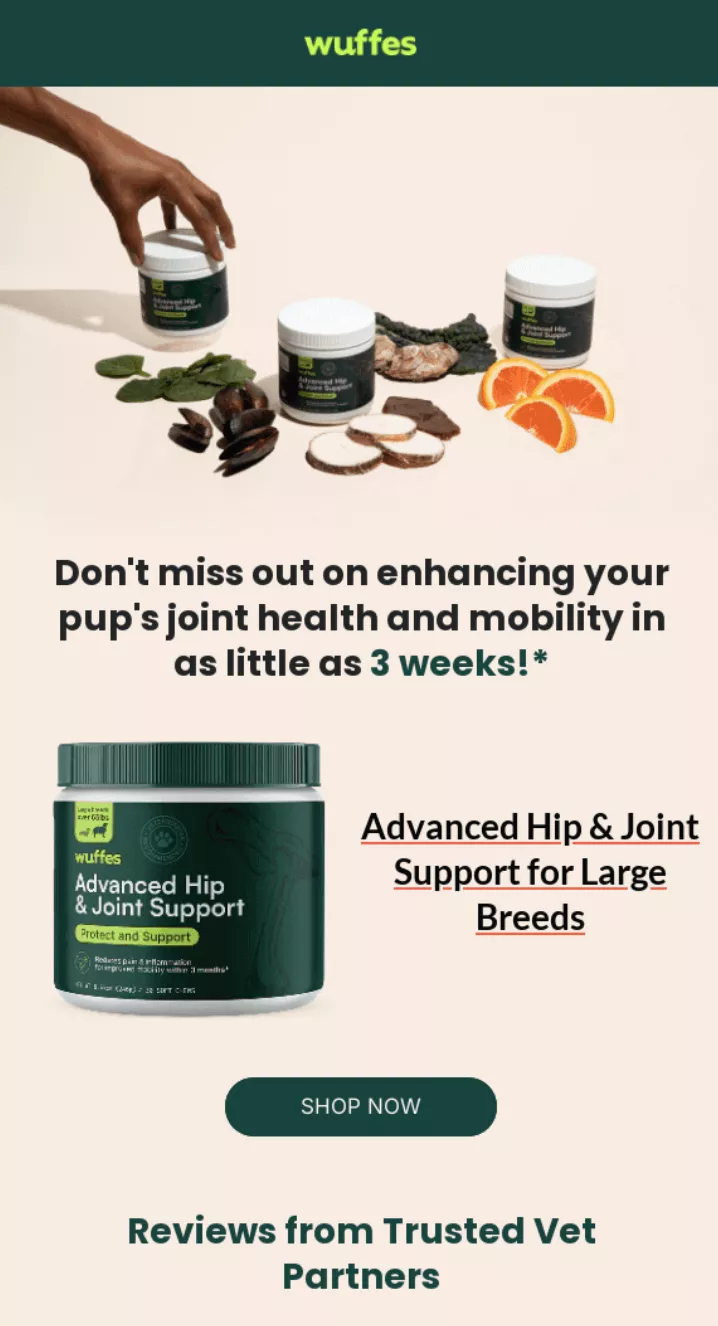
- Subject line: We noticed you had your eye on this…
- Email type: Cross-sell campaign
Wuffes improves post-purchase confidence by highlighting its Advanced Hip & Joint Support benefits and showcasing veterinary endorsements.
Customer reviews with pet photos build trust, while the 90-day guarantee removes buyers’ remorse. The product category grid at the bottom encourages exploring its full range for future purchases.
What stood out to me
Leading with “Don’t miss out on enhancing your pup’s joint health and mobility in as little as 3 weeks!” reinforces the purchase decision rather than just confirming it.
Vet testimonials with names and credentials (Dr. Sarah Wooten) add credibility most pet brands miss. The “HURRY! Our products sell out FAST” with 20 LEFT creates FOMO for additional purchases without being pushy.
26. Fatty 15
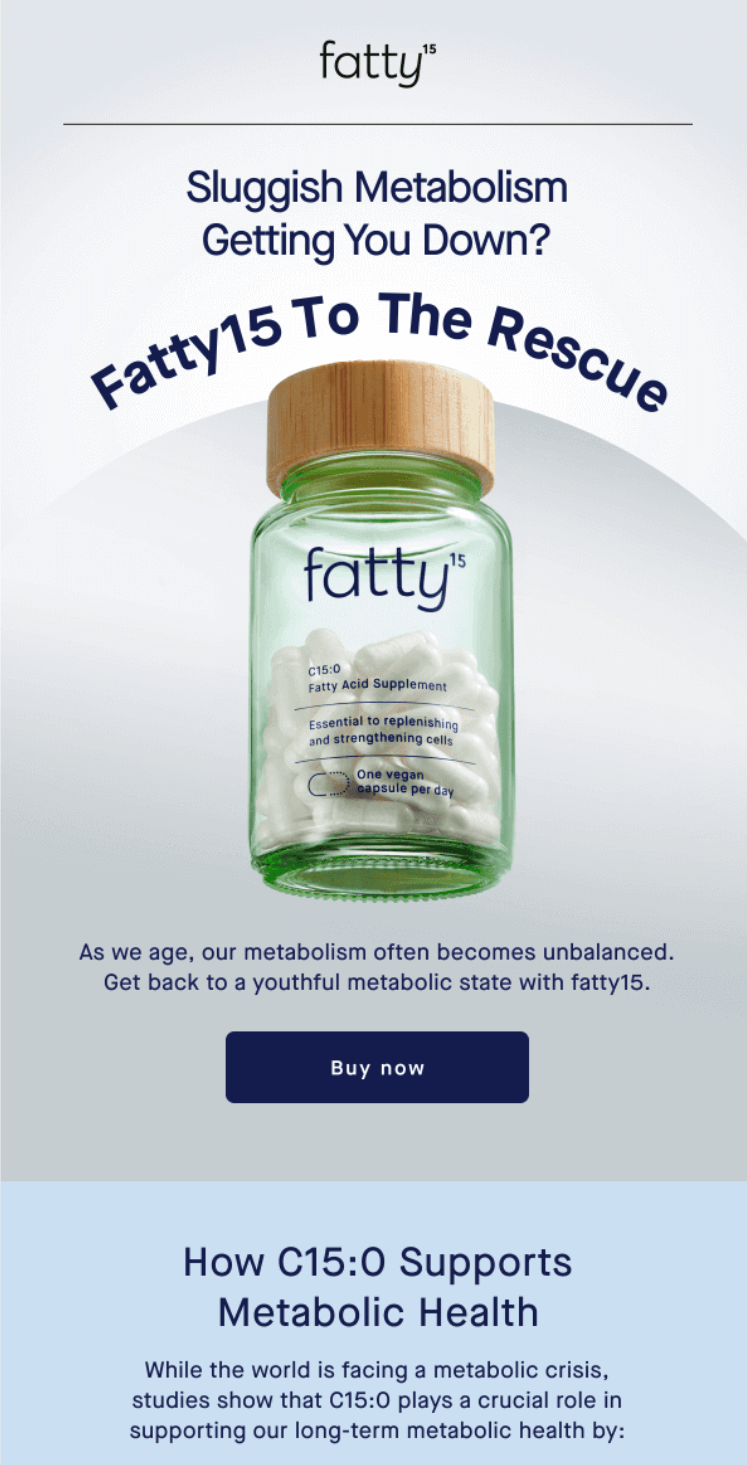
- Subject line: Sluggish Metabolism Getting You Down?
- Email type: Cross-sell campaign
Fatty15 educates customers about C15:0’s metabolic benefits after their initial purchase. Four illustrated benefits (activating PPARα/δ, boosting AMPK, enhancing AKT, and stopping ferroptosis) explain the science.
The “Ready to restart a healthy metabolism?” section encourages continued use while building confidence in their purchase decision.
What stood out to me
“Fatty15 To The Rescue” positioned over the bottle creates a hero product moment without hard selling. Breaking down complex science into digestible icons with short explanations makes metabolic health approachable.
Including studies showing “people with higher C15:0 levels have better long-term glucose control” provides evidence that matters to health-conscious buyers without overwhelming them with data.
27. WildWonder
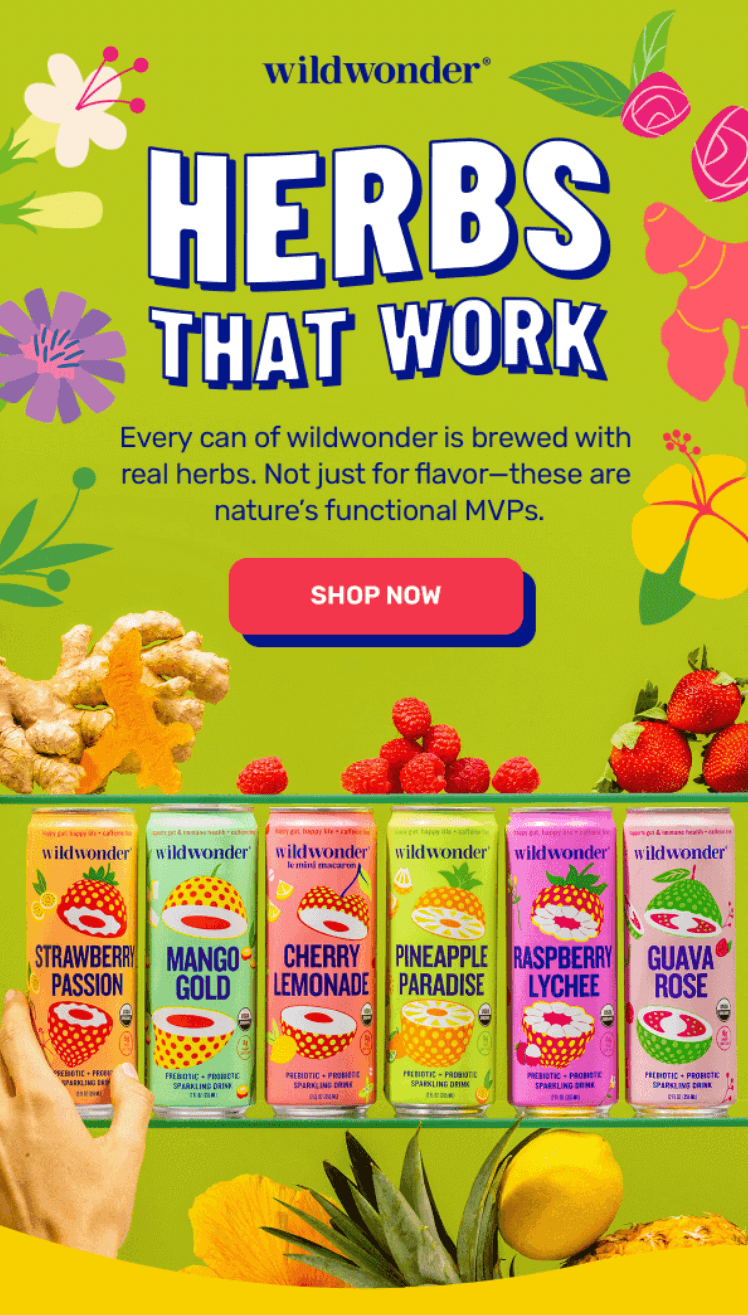
- Subject line: Your Herbs, Explained 🌿😉
- Email type: Cross-sell campaign
Wildwonder educates customers about its herb-infused beverages by breaking down each botanical’s benefits.
Six featured drinks get dedicated sections explaining key ingredients like cherry lemonade for stomach soothing or honeysuckle for anti-inflammatory properties. The colorful grid layout makes exploring different flavors feel like browsing a garden.
What stood out to me
“HERBS THAT WORK” immediately positions these as functional beverages, not just tasty drinks. Each product card pairs vibrant lifestyle photography with simple benefit statements — “Soothes the stomach” or “Boosts immunity” — making health claims accessible.
The free glassware offer at the bottom rewards loyal customers while encouraging bulk orders of their new favorite flavors.
28. Alo Yoga
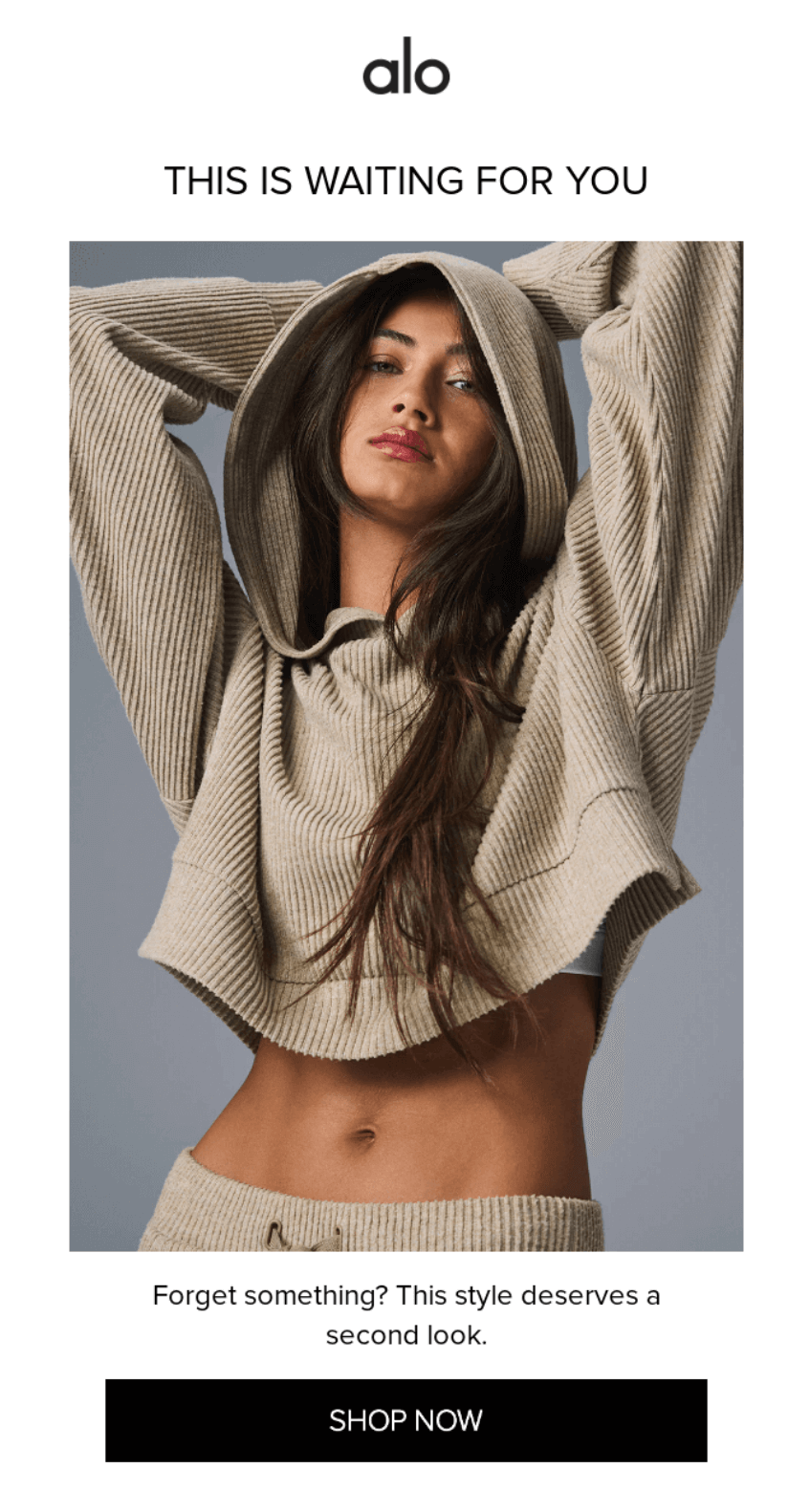
- Subject line: Take a second look!
- Email type: Abandoned cart campaign
Alo keeps its abandoned cart reminder minimal and visually focused. A single hero image showcases the ribbed hoodie set in motion, while “THIS IS WAITING FOR YOU” creates a personal connection.
The “Forget something? This style deserves a second look” copy gently nudges without being pushy about the abandonment.
What stood out to me
Showing the product styled on a model in dynamic poses reminds shoppers why they loved it initially. “MORE STYLES YOU’LL LOVE” below provides alternatives if the original item doesn’t convert, smart for capturing any sale.
The clean design with plenty of white space feels premium, matching Alo’s brand positioning in the luxury activewear market.
29. McDonalds
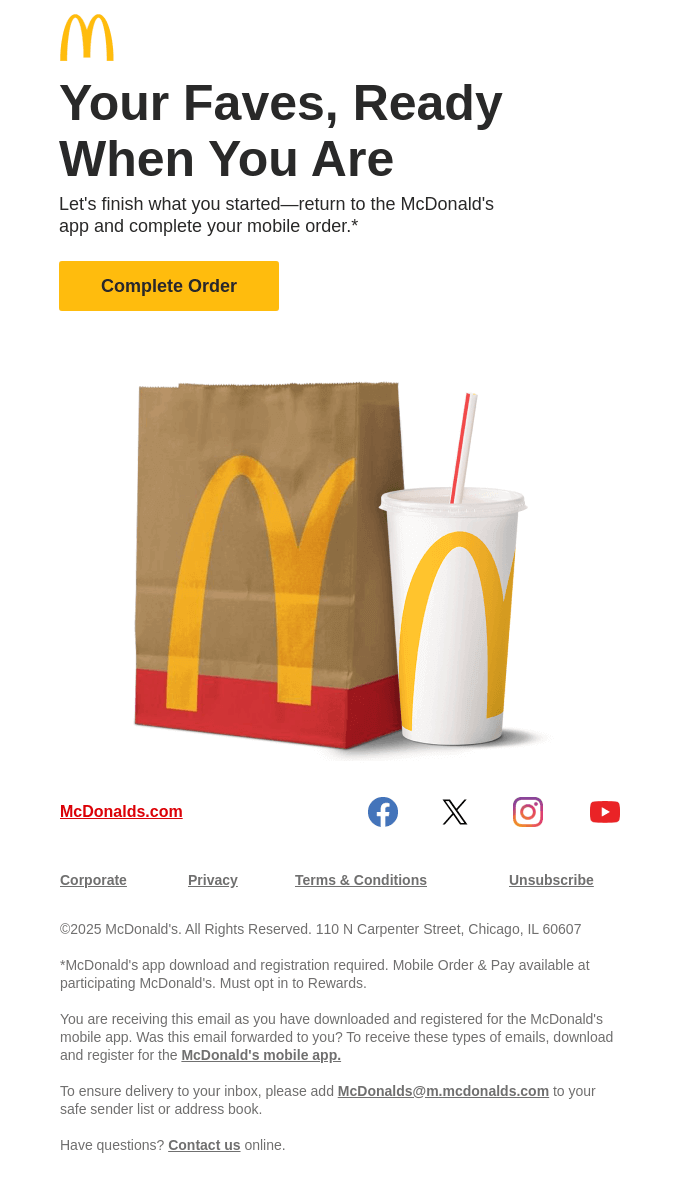
- Subject line: Your order is ready to place 👍
- Email type: Abandoned cart campaign
McDonald’s reminds app users about their incomplete mobile order with friendly, no-pressure messaging.
The familiar golden arches and product imagery create instant brand recognition while “Your Faves, Ready When You Are” acknowledges customer preferences. One clear CTA button makes completing the order effortless.
What stood out to me
McDonald’s masters the balance between reminder and invitation — no guilt trips or countdown timers here. The bag-and-drink visual works universally since everyone’s “faves” differ, avoiding the awkwardness of showing wrong items.
I also noticed it mentions mobile order benefits in the footer, subtly reinforcing why the app beats the drive-thru line.
30. Huckberry
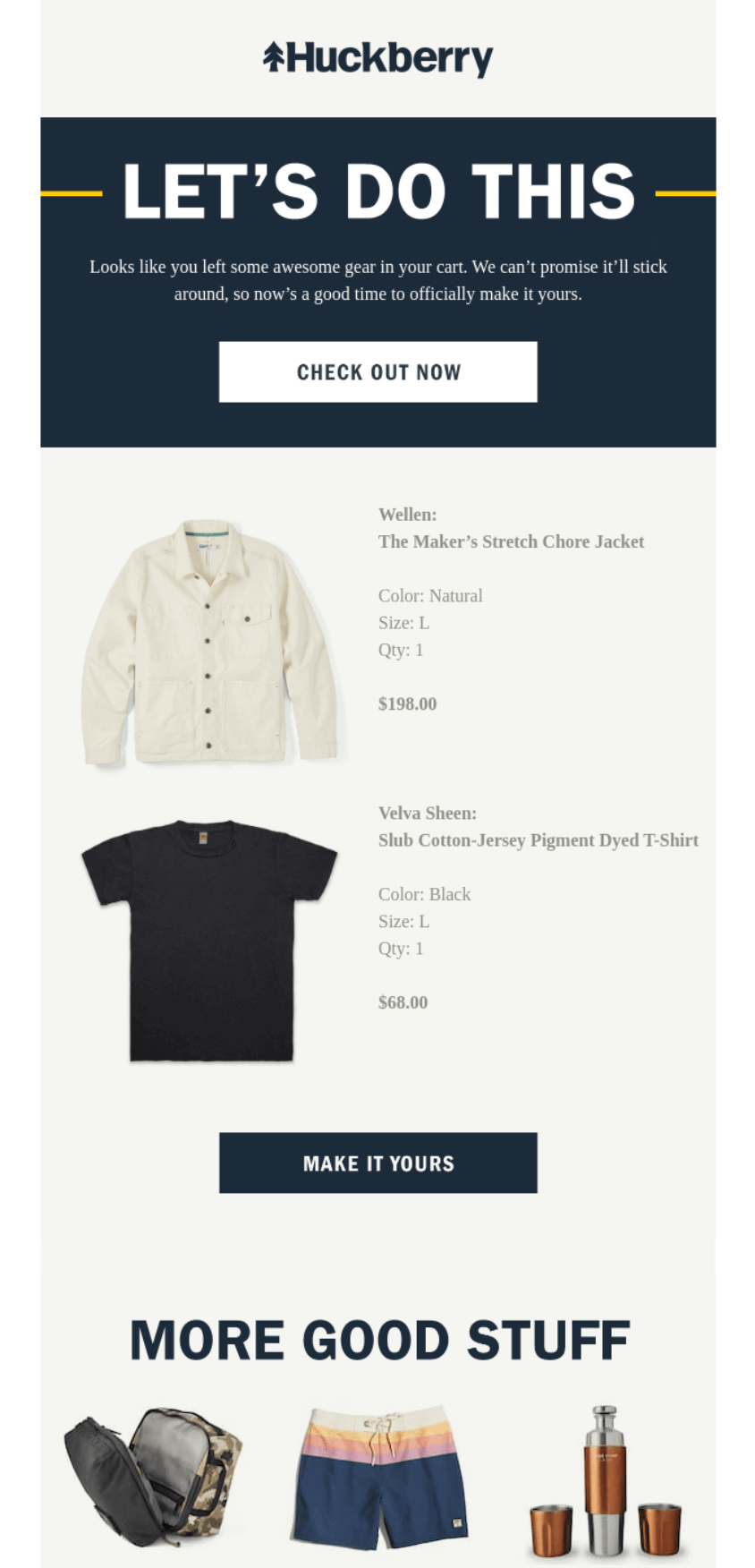
- Subject line: Just a few left…
- Email type: Promotional campaigns
Huckberry saves its customers’ carts and sends emails that show abandoned cart items with details like color, size, and quantity to jog memory.
The “LET’S DO THIS” messaging creates momentum, and “We can’t promise it’ll stick around” creates urgency to encourage customers to start shopping again. The “MORE GOOD STUFF” section below provides alternatives if original items sell out.
What stood out to me
“Looks like you left some awesome gear in your cart” feels like a friend reminding you about forgotten plans. Showing items with all details (Natural, Size L, Qty: 1) removes guesswork and builds trust.
The grid of alternative products at the bottom turns potential disappointment into discovery if cart items are gone.
Best practices for effective email marketing campaigns
Email campaigns that convert share common traits — clear messaging, targeted content, and reader-focused design. Master these fundamentals to build campaigns that work:
Have a goal for all your campaigns
I recommend that you pick one goal per campaign and stick to it. Mixed messages about sales, feedback, and brand awareness can confuse subscribers, leading them to delete rather than decode.
Success looks different for each campaign type. Product launches might chase 500 sales, feedback emails need a 20% response rate, and welcome series focus on engagement metrics.
Share your goal with everyone involved in the campaign. Designers, writers, and analysts all make better decisions when they know the target.
Document everything — from success metrics to failure points. Next quarter’s campaign improves faster when you learn from data, not fuzzy memories.
Expert tip
Some campaigns double their conversion rates simply by removing competing goals. When everyone focuses on one outcome, magic happens — from subject lines to design choices.
Segmentation
Your contact list might contain marathon runners and recreational gym goers, bargain hunters, and luxury shoppers. Why send them all the same message?
I love using Omnisend’s segmentation tools to group contacts automatically by behavior, location, or purchase patterns. For instance, if you have a sporting goods store, you can separate yoga enthusiasts from weightlifters in seconds.
Fresh subscribers want different content from five-year customers. One group needs product education, the other craves insider perks and early access.
Start with three segments — new subscribers, active buyers, and quiet contacts. Add complexity only after these foundational groups perform well.
Expert tip
The biggest mistake is over-segmenting too early. Master three segments first, and you’ll catch more opportunities without the complexity headache.
Content that resonates
Subscribers delete emails that only talk about you and your offers. Solve their problems first, sell your solution second.
Mix content formats to discover what your audience reads. Quick tips work for busy parents, and detailed guides appeal to hobbyists learning new skills.
Follow a 3:1 rule — three helpful emails for every sales pitch. Readers stay subscribed when they get value beyond discount codes.
Expert tip
Highest-performing sites treat email like a magazine, not a megaphone. They educate, entertain, then sell — in that order. Sales naturally follow value.
Actionable CTAs
“Click here” tells readers nothing about their next step. “Get your 20% discount” or “Download the guide” sets clear expectations.
Mobile readers need thumb-friendly buttons above the fold. Desktop users who scroll can find secondary CTAs lower in your message.
Size matters for mobile tapping — 44×44 pixels is a good benchmark. Smaller buttons can frustrate users who miss their target and accidentally click unsubscribe instead.
Button colors should pop against your background without clashing with brand guidelines, so test different contrast levels to maximize visibility and clicks.
Expert tip
CTAs with outcome-based language, such as “Save $50 on sneakers,” generate more clicks than vague ones every time.
Email campaign design
In my experience, around six in 10 emails are opened on phones, making mobile optimization mandatory. Single columns work everywhere, but some multi-column layouts break on small screens and ruin email designs.
Omnisend’s templates start mobile-ready and stay that way. Swap colors and fonts to match your brand in minutes, not hours.
Heavy images kill load times and engagement. Keep files under 1MB and always include alt text for image-blocking email clients.
Gmail displays differently from Outlook, which differs from Apple Mail. Test everywhere your subscribers read to catch formatting issues before sending.
Expert tip
The best thing you can do for your email templates is make them as similar to your website as possible. That familiarity helps improve trust and click-through rates.
Personalization
First names in subject lines barely scratch personalization’s surface. Product recommendations based on purchase history convert browsers into buyers.
Dynamic content serves different products to different segments automatically. Runners see shoes, swimmers see goggles, all from one campaign.
Location-based subject lines grab attention instantly. “Seattle shoppers: rain gear restocked” beats “New arrivals in store” every time.
Having insufficient data ruins personalization faster than no personalization. Regular list cleaning keeps your recommendations relevant and your reputation intact.
Omnisend has a product recommender Item in its email builder that uses order and browsing history to pull products. Additionally, you can use Liquid syntax in subject lines and email bodies to mention your customers by name (plus more).
Expert tip
Don’t skip browse history data when personalizing your campaigns. Customers who see their viewed products in emails are more likely to click and start shopping again.
Common email marketing campaign mistakes to avoid
Email campaigns build loyalty and increase sales when executed properly. I’ve watched marketers repeat the same errors that tank their results.
Learning from others’ mistakes saves you time and protects your sender reputation. Each error below comes with practical fixes you can implement today.
Spammy subject lines
Those “URGENT!!!” and “Act NOW!!!!” subject lines? Subscribers spot them instantly and hit delete, or report you as spam, and reduce your deliverability.
Clarity wins over wordplay in my experience. “20% off your next purchase this week only” beats “Don’t miss this crazy deal!” because readers know what they’re getting.
All caps and excessive punctuation mark you as an amateur. Write subject lines that inform rather than shout at subscribers.
Create urgency when you mean it. If every email claims “Last chance!” then your subscribers learn to ignore your deadlines.
I use Omnisend’s free subject line tester to score my headlines from zero to 100. It analyzes length and word choice to help me write subject lines that get opened.
Ignoring mobile optimization
Most subscribers check their email on their phones first. Designing for desktop only showcases a fraction of your audience that their experience doesn’t matter.
Responsive templates save hours of formatting work. One design adapts to phones, tablets, and computers, keeping your message readable everywhere.
Mobile readers skim, so put value up front. Short paragraphs, clear headlines, and bullets help people find what matters.
Preview campaigns on actual devices before sending. Desktop perfection means nothing if your call-to-action disappears on iPhones.
Lack of personalization
Mass emails feel like junk mail in any format. Subscribers expect recognition as individuals with unique needs and interests.
Names create a connection where generic greetings fail. “Hi Sarah!” works better than “Dear Customer” every time.
Segmentation multiplies results without multiplying work. I group subscribers by behavior — runners see shoes, yogis see mats, everyone gets relevant content.
Dynamic content personalizes at scale. Weather-based recommendations show coats to Chicago while Miami sees swimwear, all from one campaign.
Sending too frequently or infrequently
Email frequency was challenging to determine for me when I first started marketing.
I’ve found weekly works for product updates, and monthly sends suit newsletters. Your ideal frequency depends on content type and what subscribers want.
Metrics reveal frequency problems before subscribers complain. Unsubscribe spikes and falling opens mean you’ve crossed from helpful to annoying.
Preference centers put subscribers in control. Some want daily deals while others prefer monthly summaries — letting them choose reduces friction.
Why choose Omnisend for your email marketing campaign services?
I’ve tested plenty of email marketing campaign services over the years. Omnisend works differently because it’s built for ecommerce from the ground up.
Everything connects — your store data, customer behavior, and marketing messages work together automatically. No more copying data between tools or missing sales because your email platform doesn’t understand ecommerce.
What you get with Omnisend:
- Pre-built workflows for welcome emails, cart recovery, and win-back campaigns
- Segmentation based on what customers buy, how often, and when
- One-click integration for most ecommerce platforms, including the big three (Shopify, WooCommerce, BigCommerce)
- Product recommendation blocks powered by browsing and purchase data
- Analytics for campaigns and automations showing revenue per email, not just open and click-through rates
- SMS marketing without switching platforms or learning new tools
- Embeddable forms, popups, and slide-outs for list-building
- A/B testing for every campaign type (test subject lines, content, and more)
How one agency generated $100k in extra monthly revenue
Enflow Digital took over a struggling hobby retailer’s email marketing after its manager quit. The account was in disarray, with campaigns blasted to everyone, all automations turned off, and zero segmentation.
Within months, Enflow rebuilt everything using Omnisend. It reactivated abandoned cart flows, created targeted campaigns, and grew the email list from 58k to 114k subscribers.
Monthly revenue jumped from $150k to $250k. Automated emails alone started generating $61k per month — money that required zero daily effort once set up.
“We implemented maintenance reminders for key products and loyalty program nudges,” says Karolina Uvarkina from Enflow. “These flows generated nearly half a million dollars in a year.”
The hobby retailer now earns $100k more each month without hiring staff or increasing ad spend — just better email marketing with the right platform.
Conclusion
Email campaigns connect you to opted-in audiences and can generate significant revenue through automations and scheduled newsletters.
Success depends on matching what you send — campaign types, frequency, timing — to what subscribers need and want from your brand.
An email marketing tool that handles segmentation, automation flows, and personalization makes this possible at scale. When technology manages the complex parts, each campaign naturally finds its audience and delivers the experience they expect.
Quick sign up | No credit card required
FAQs
Below are some frequently asked questions that can help you better understand email marketing campaigns:
To start an email marketing campaign, consider the following steps:
1. Define your goals
2. Identify your target audience
3. Choose an email marketing platform that suits your needs
4. Create engaging content and design visually appealing emails that reflect your brand
5. Build a quality email list by collecting addresses from interested individuals
6. Plan your campaign timeline
7. Send your emails
8. Analyze the results to refine future efforts
Email campaigns are legal but must comply with regulations protecting consumers. In the US, the CAN-SPAM Act requires clear sender identification, a physical address, and an easy opt-out option. In the EU, the GDPR mandates obtaining explicit consent before sending marketing emails. Familiarize yourself with legal requirements in your area to avoid penalties and protect your brand reputation.
An email campaign is designed to prompt action from the reader — whether it be checking out your latest products or making a purchase — by delivering targeted and relevant content to their inbox. A solid email marketing campaign helps you connect with your audience on a more personal level, all while keeping costs down and increasing sales.
Abandoned cart emails win for pure ROI — they catch buyers at the moment of hesitation with products already chosen. The welcome series comes second, converting curious subscribers into paying customers while interest is at its peak.
The best campaigns solve immediate problems. Someone browsing winter coats needs size guides and shipping times, not your company history. Read the room — or in this case, read their behavior — and deliver what helps them buy.
TABLE OF CONTENTS
TABLE OF CONTENTS


No fluff, no spam, no corporate filler. Just a friendly letter, twice a month.
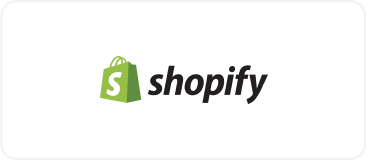
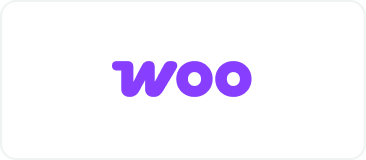 OFFER
OFFER

